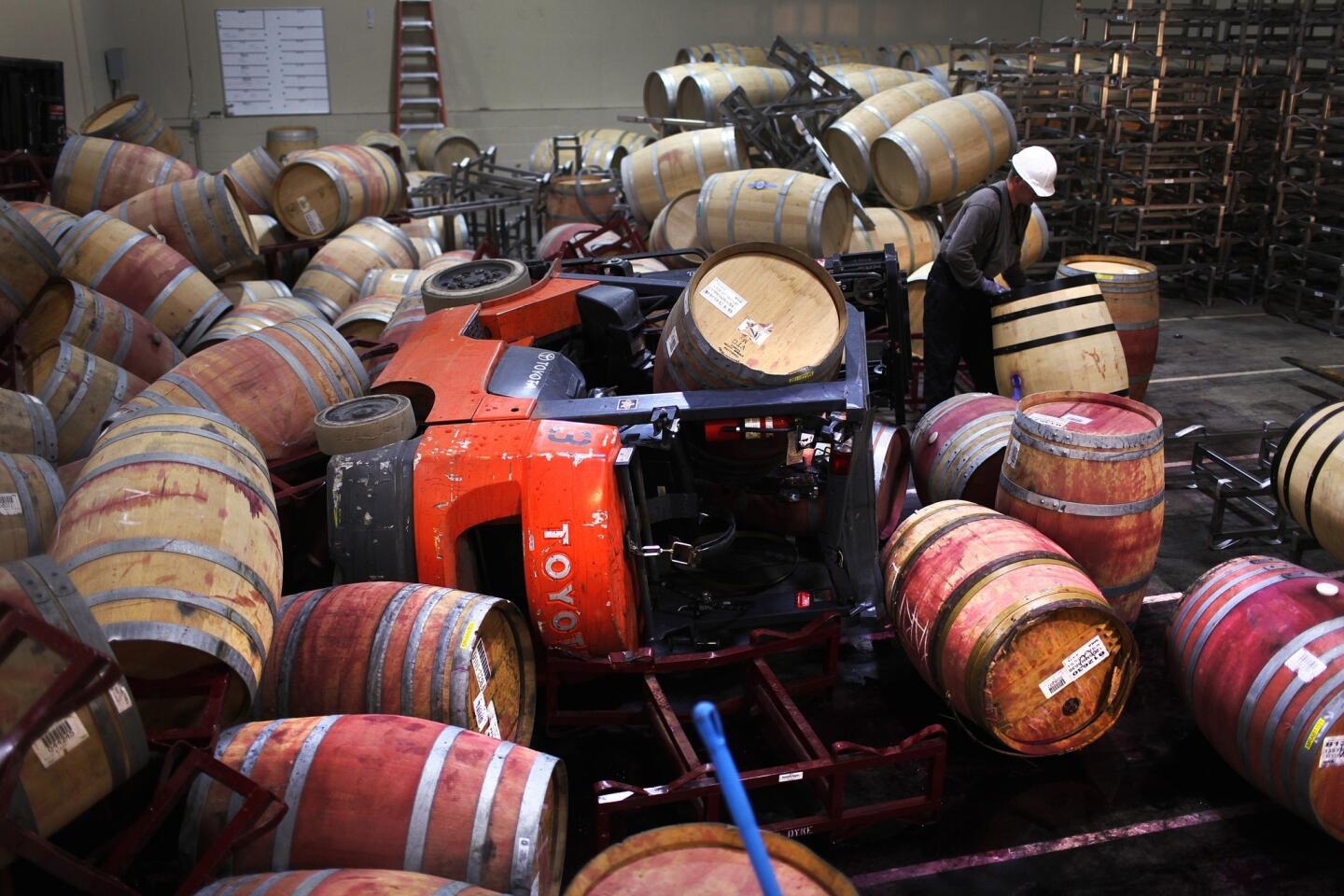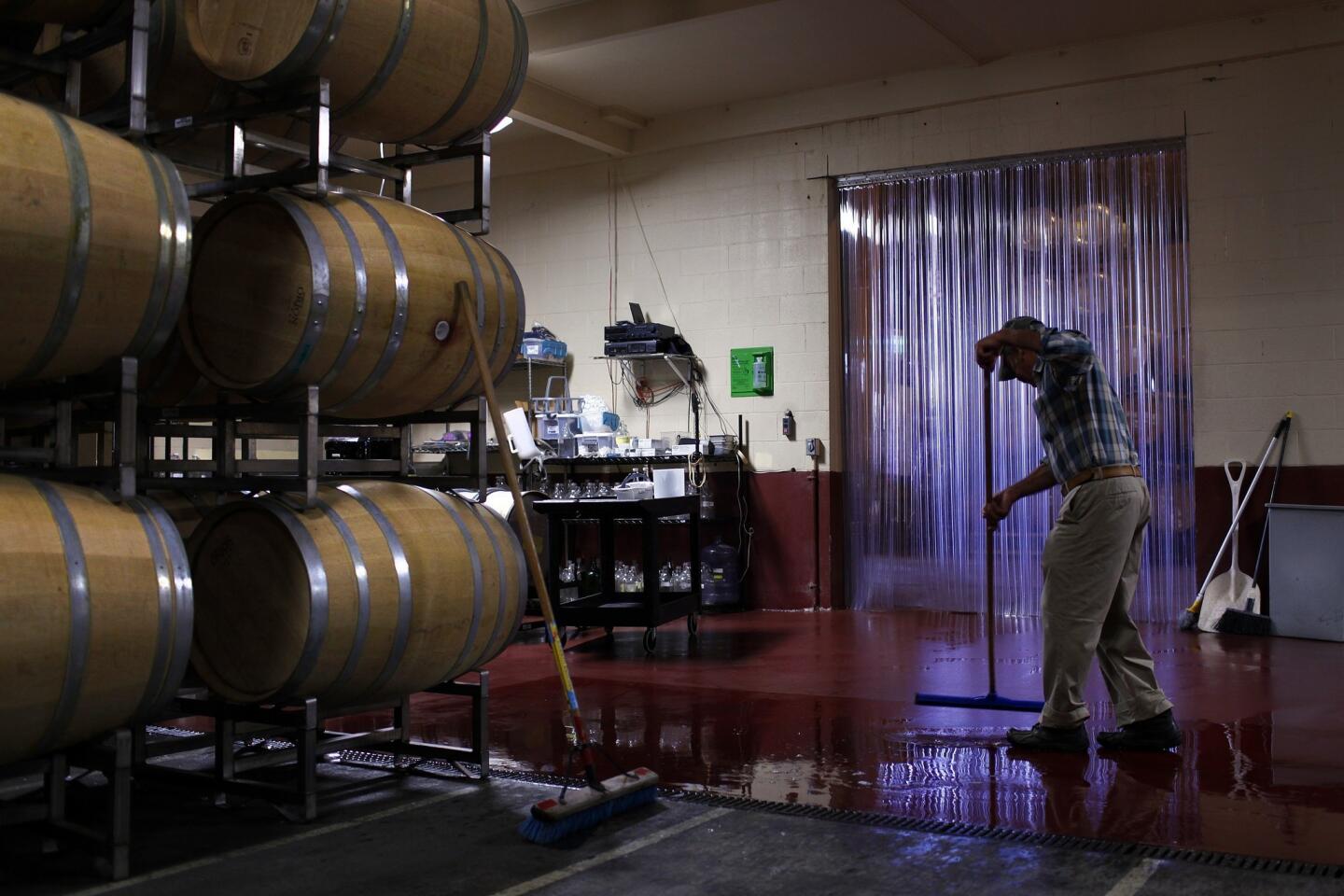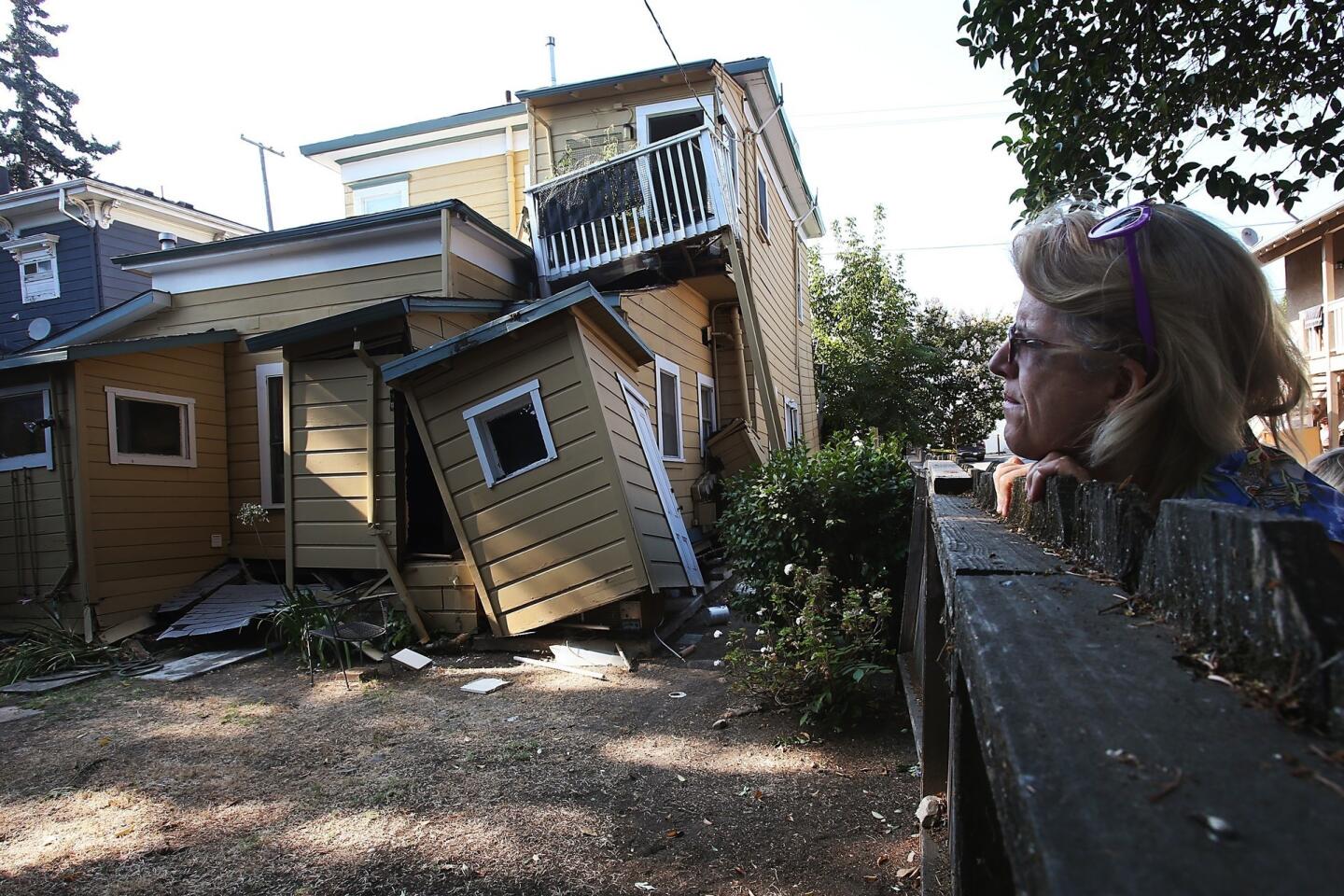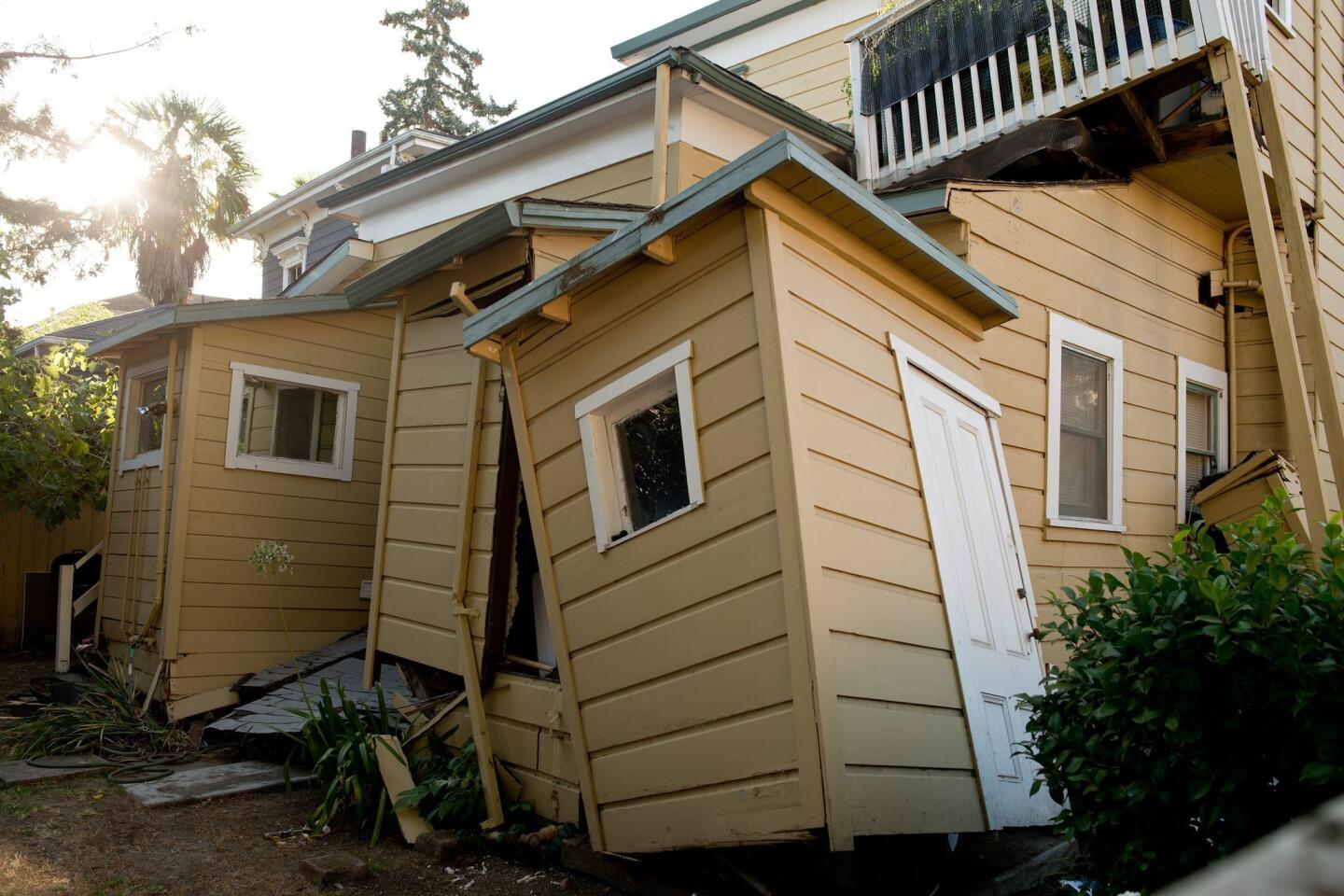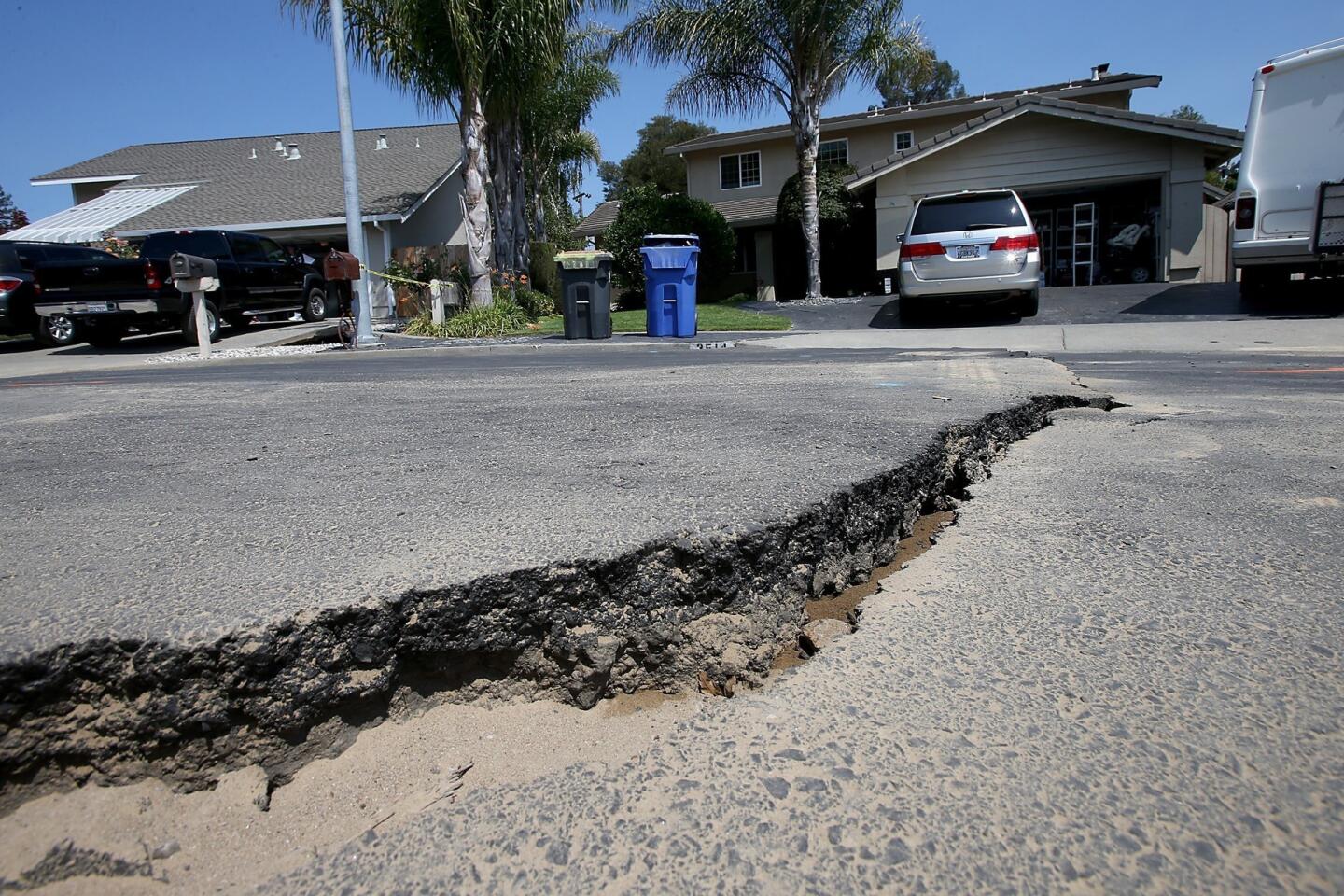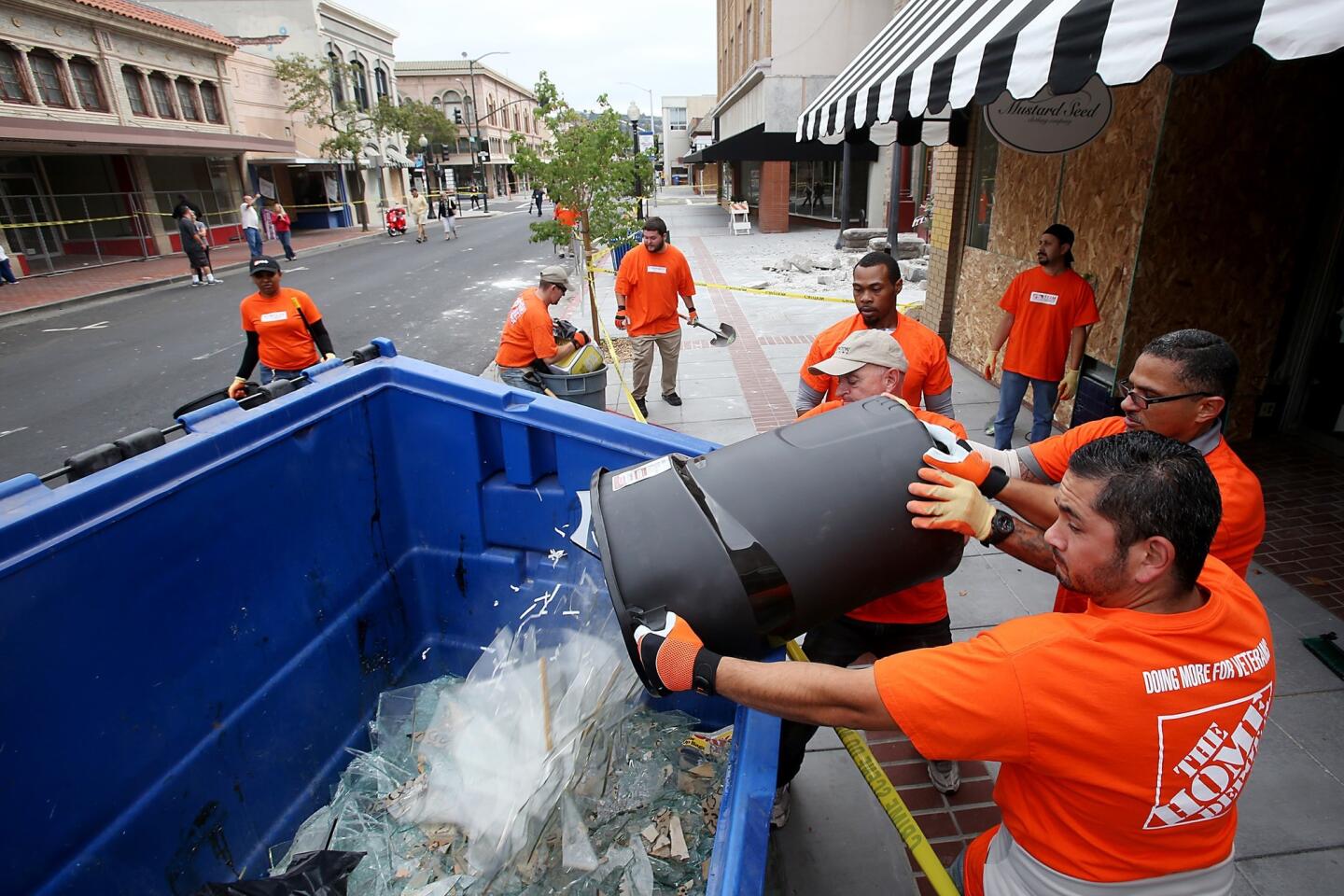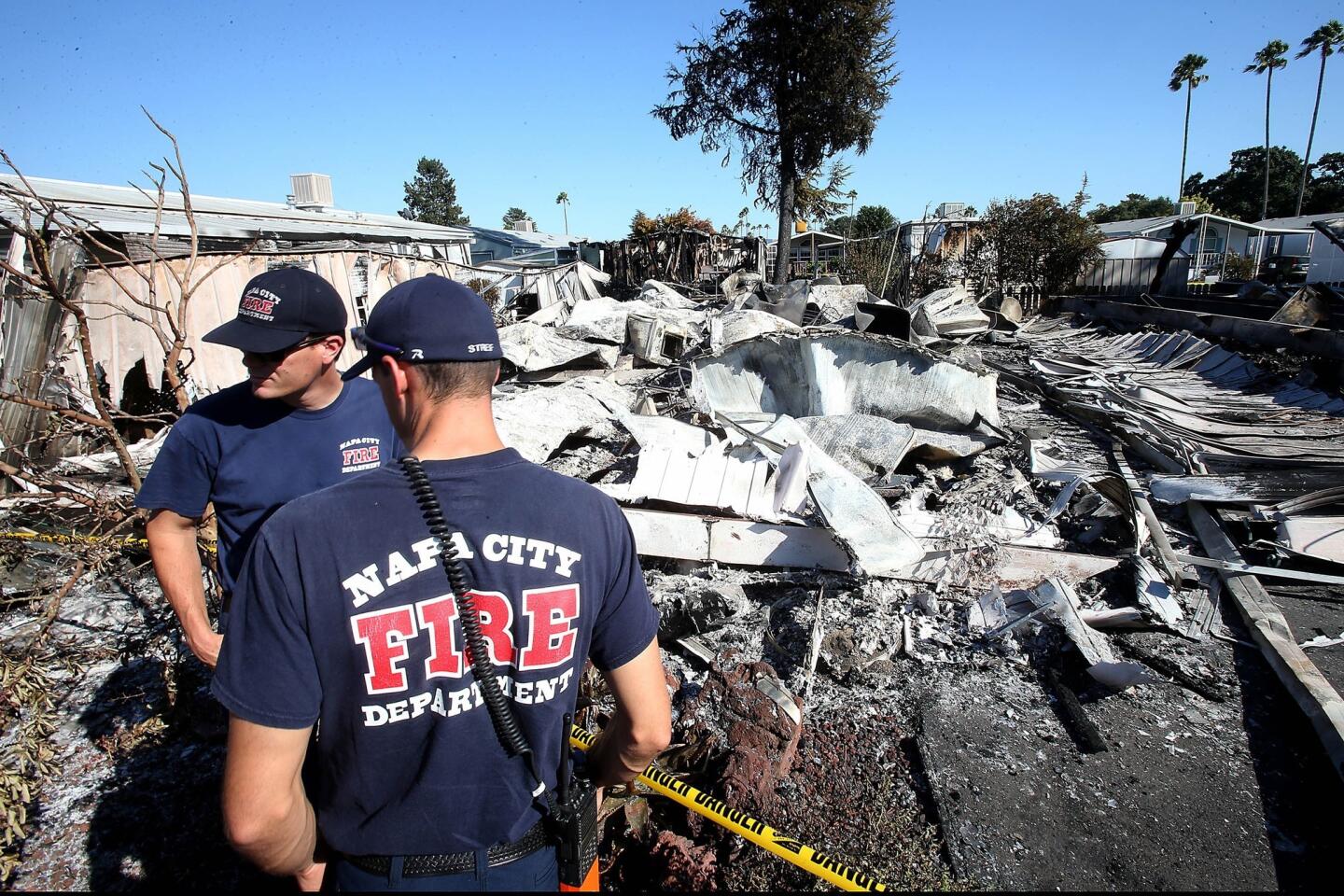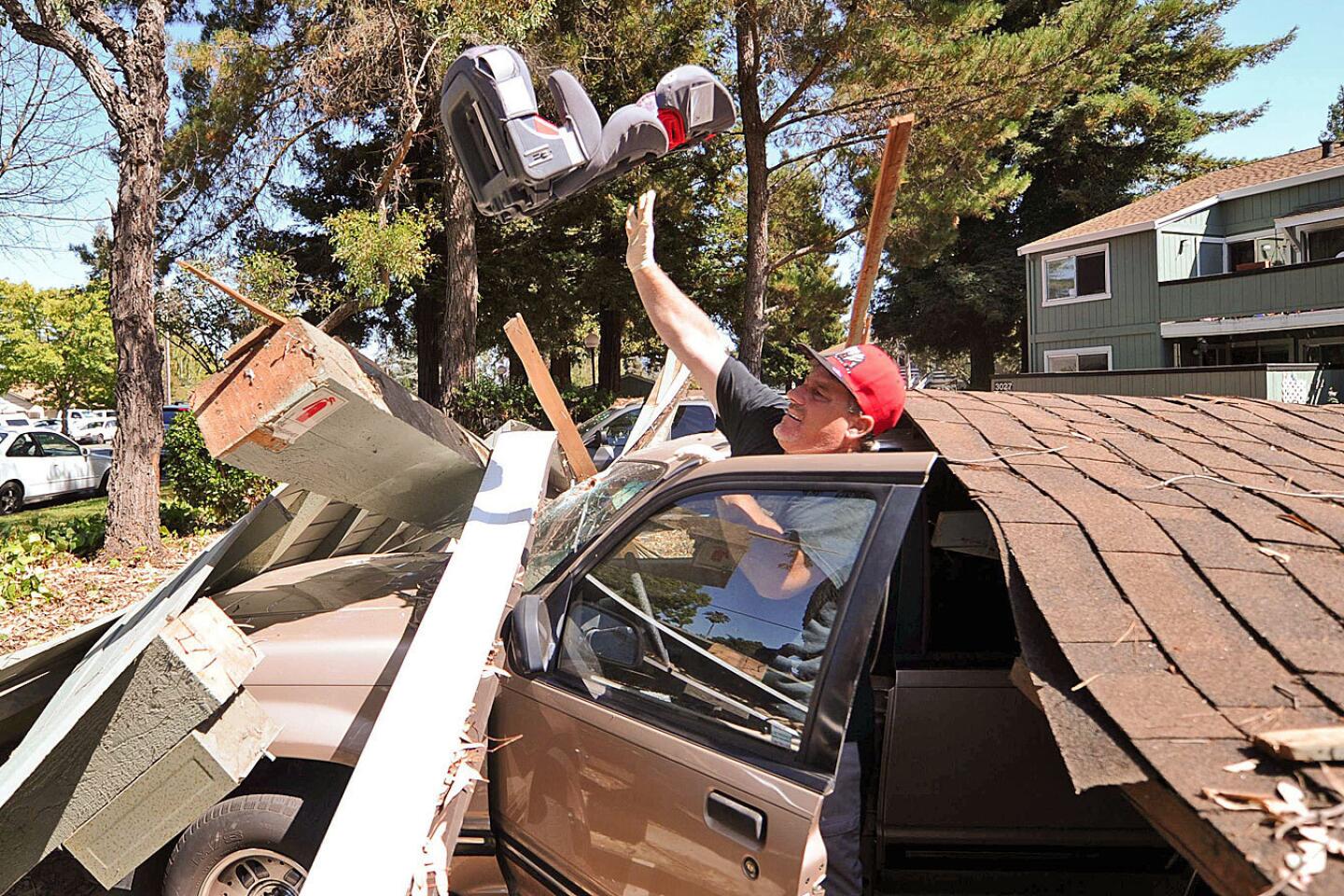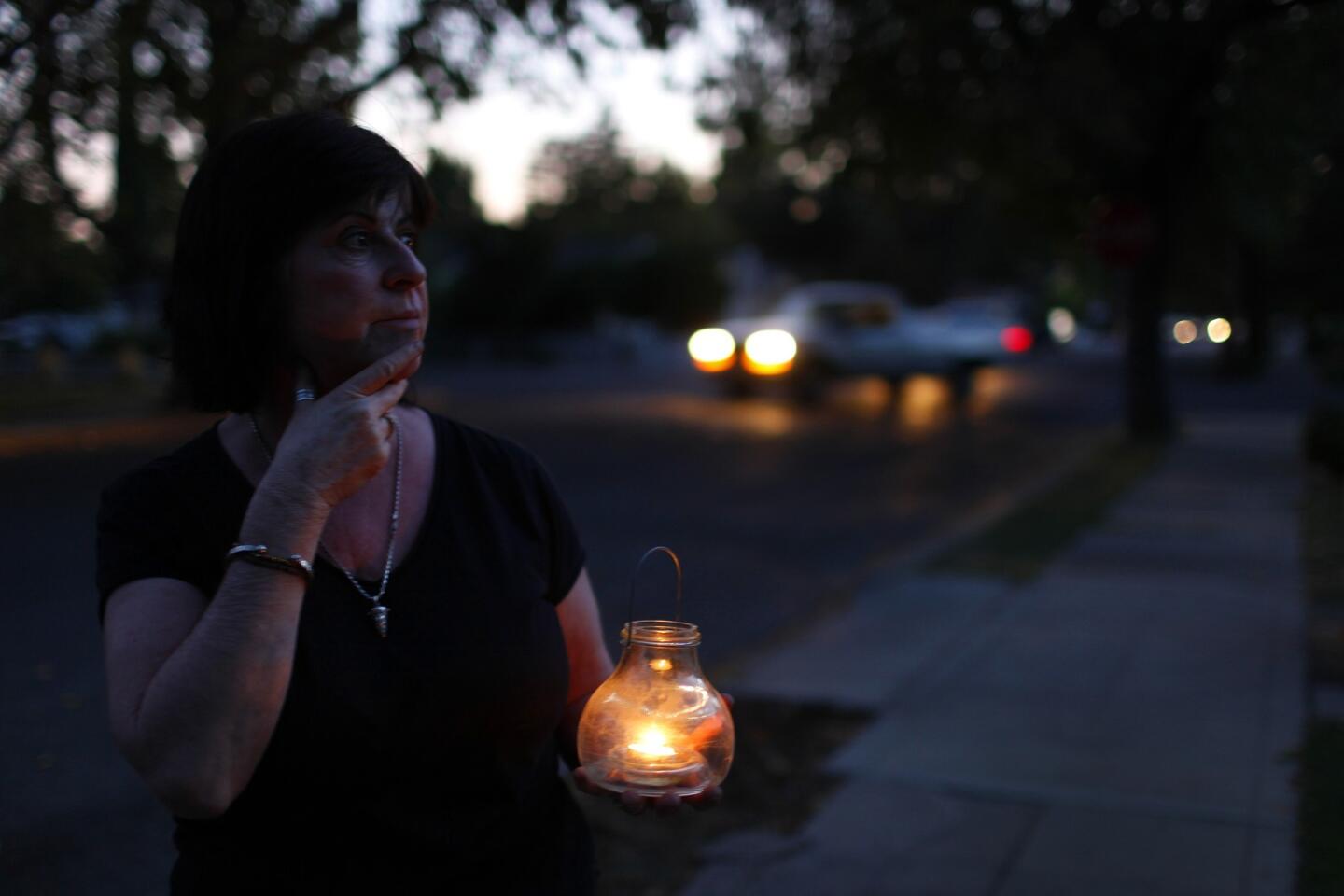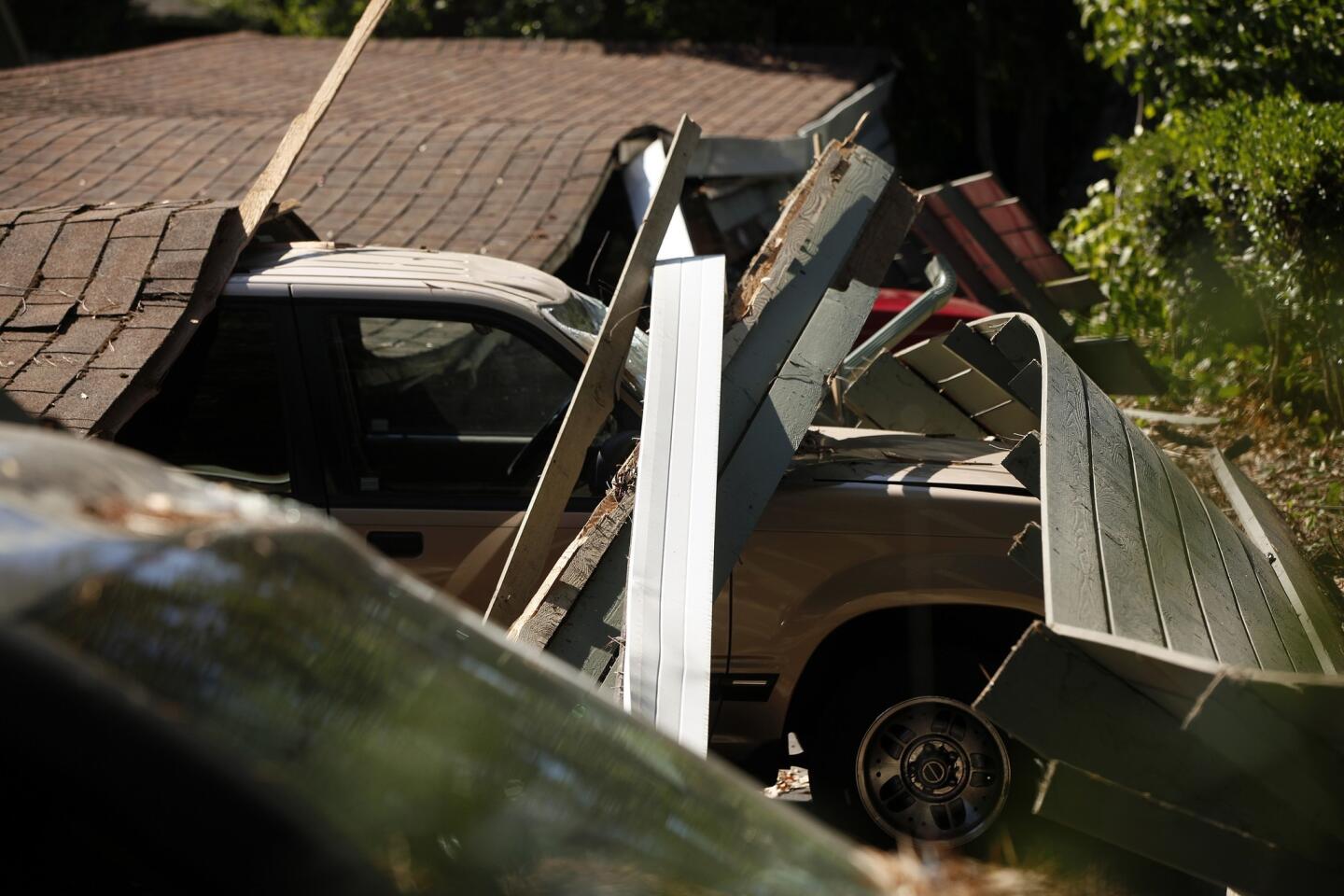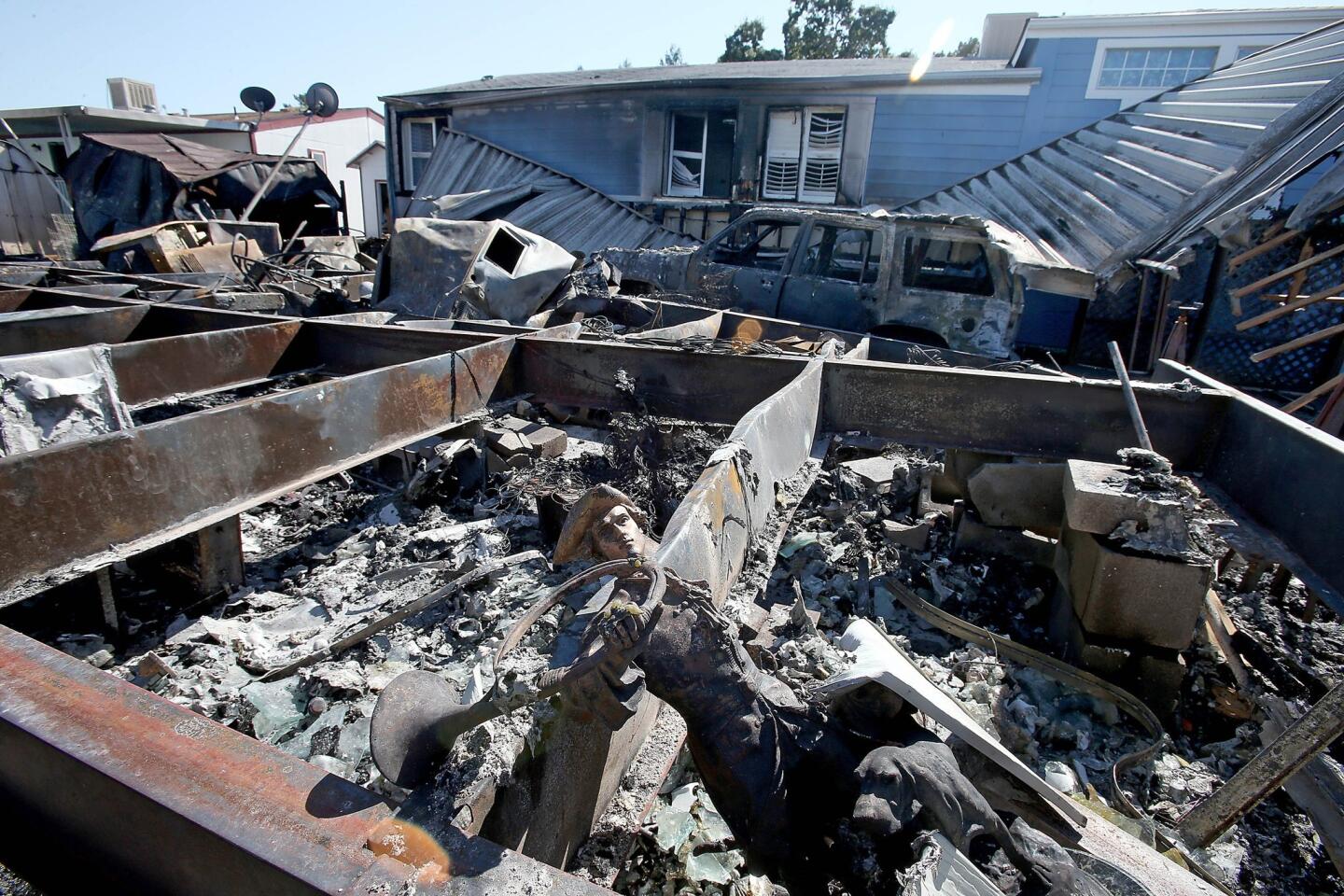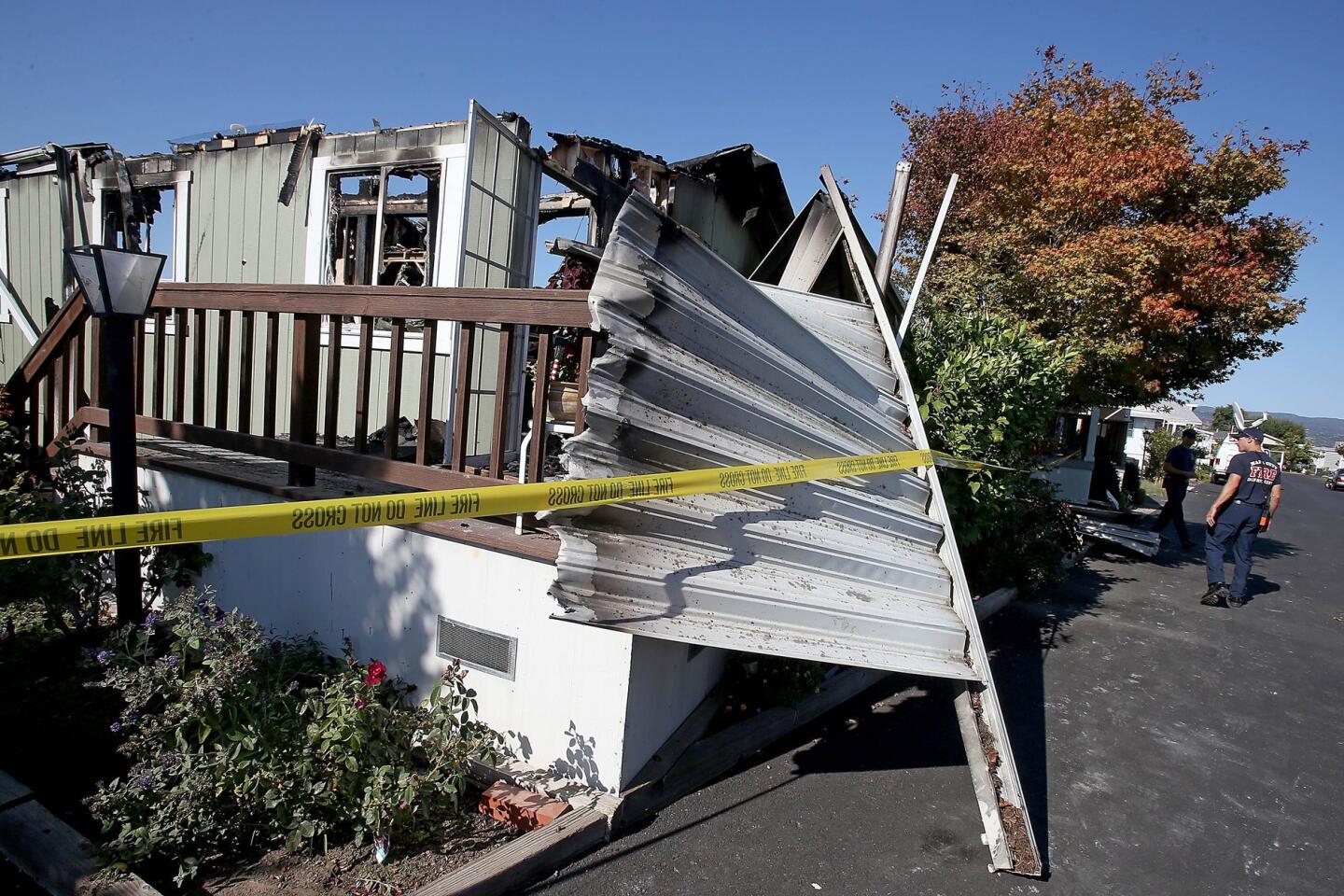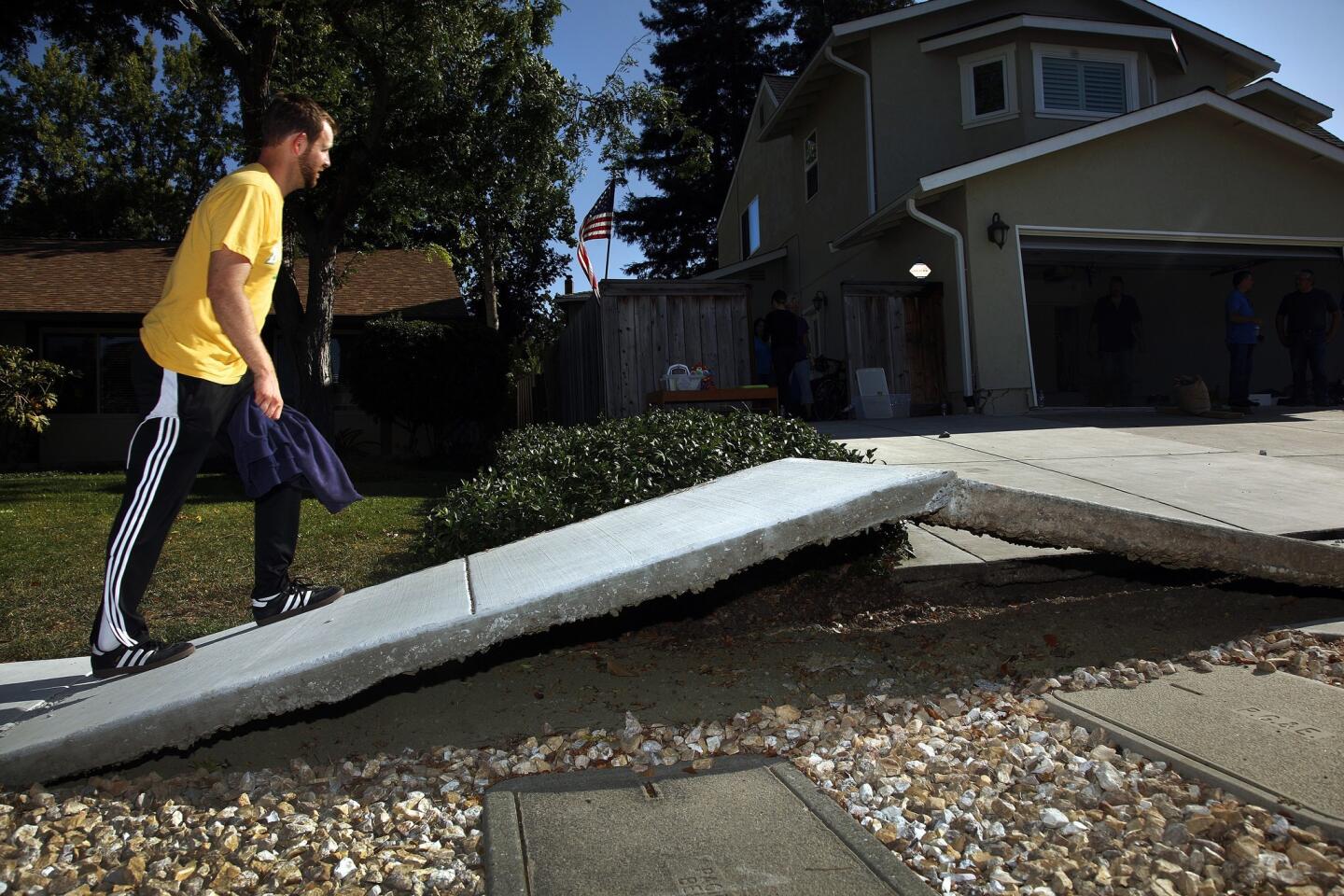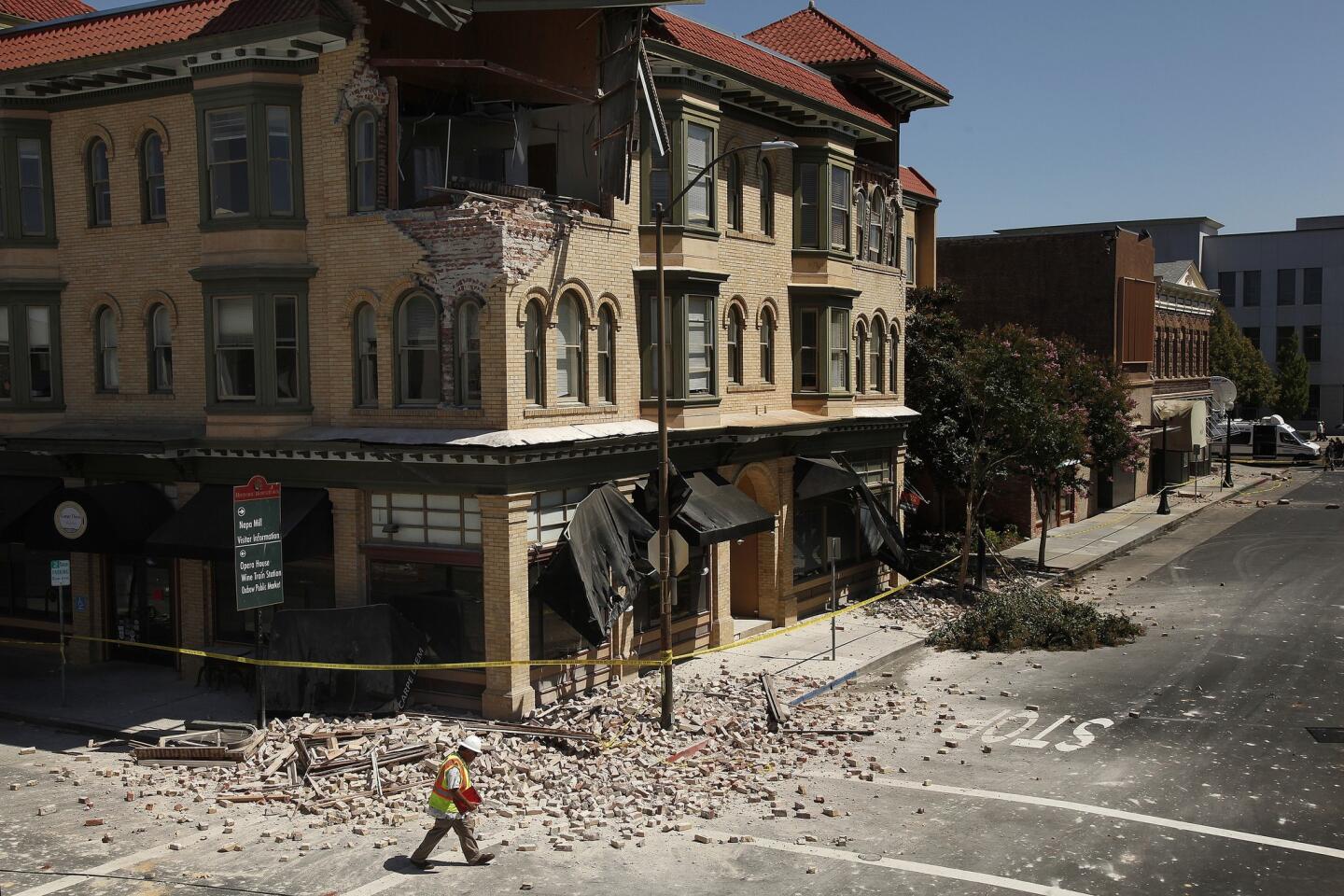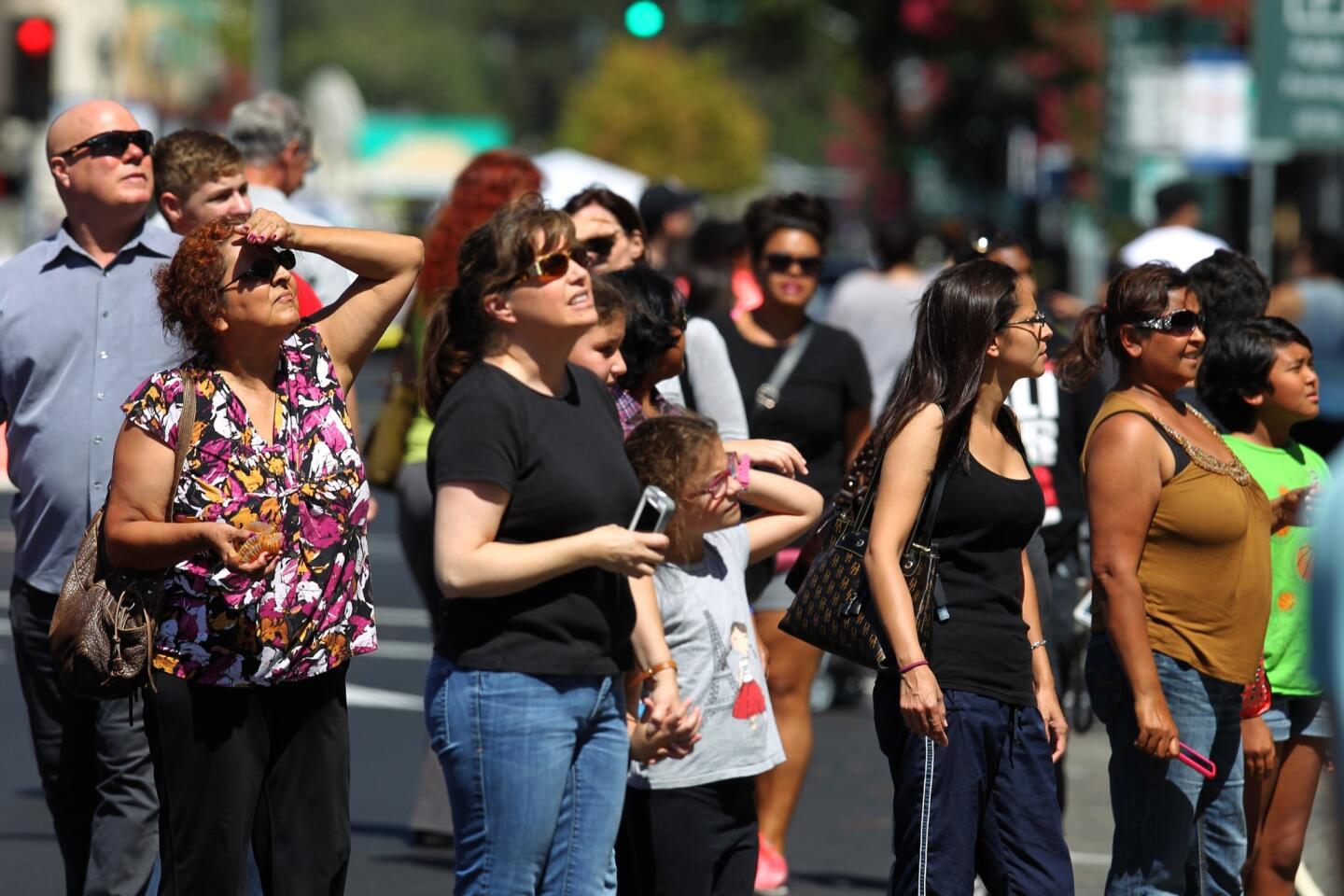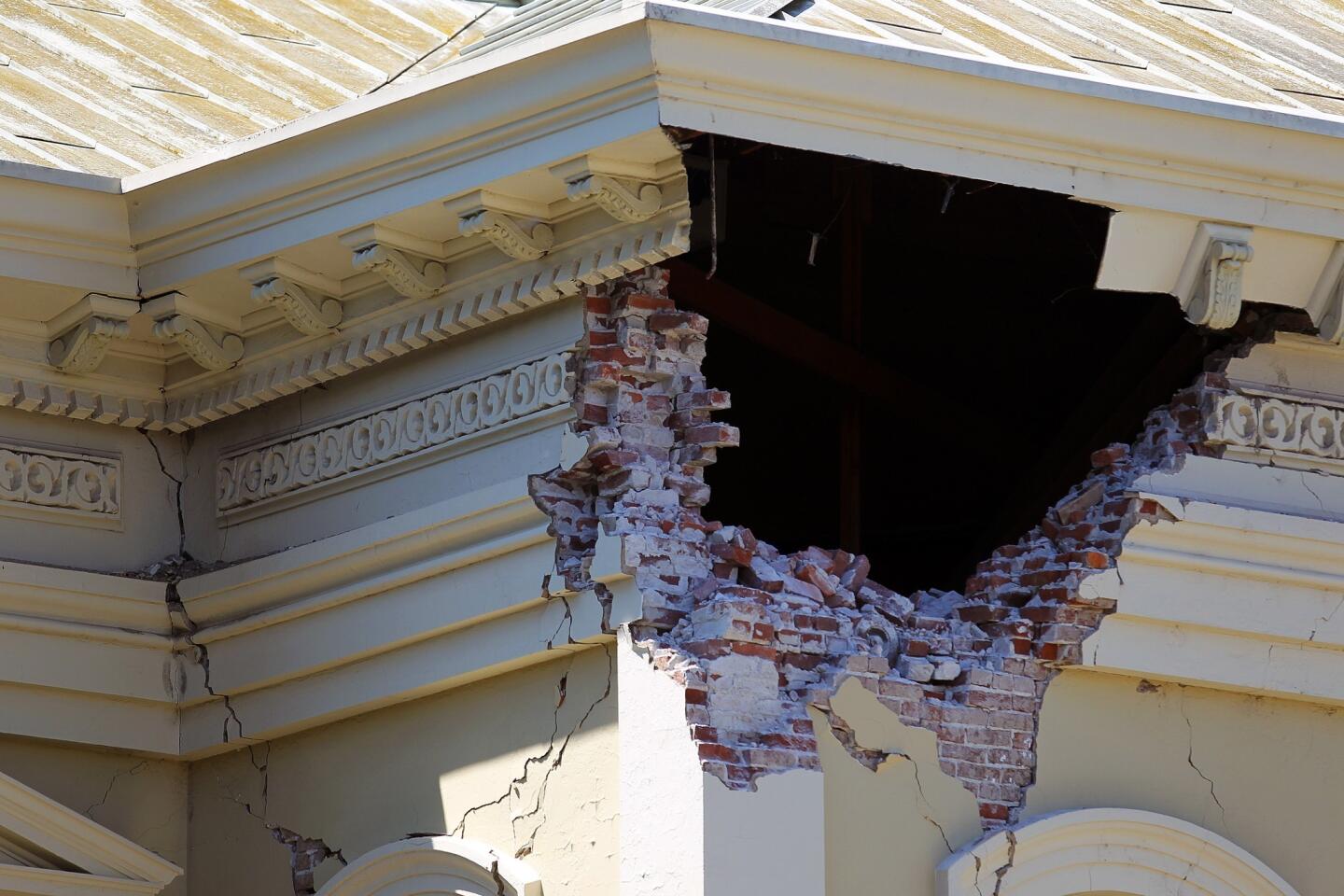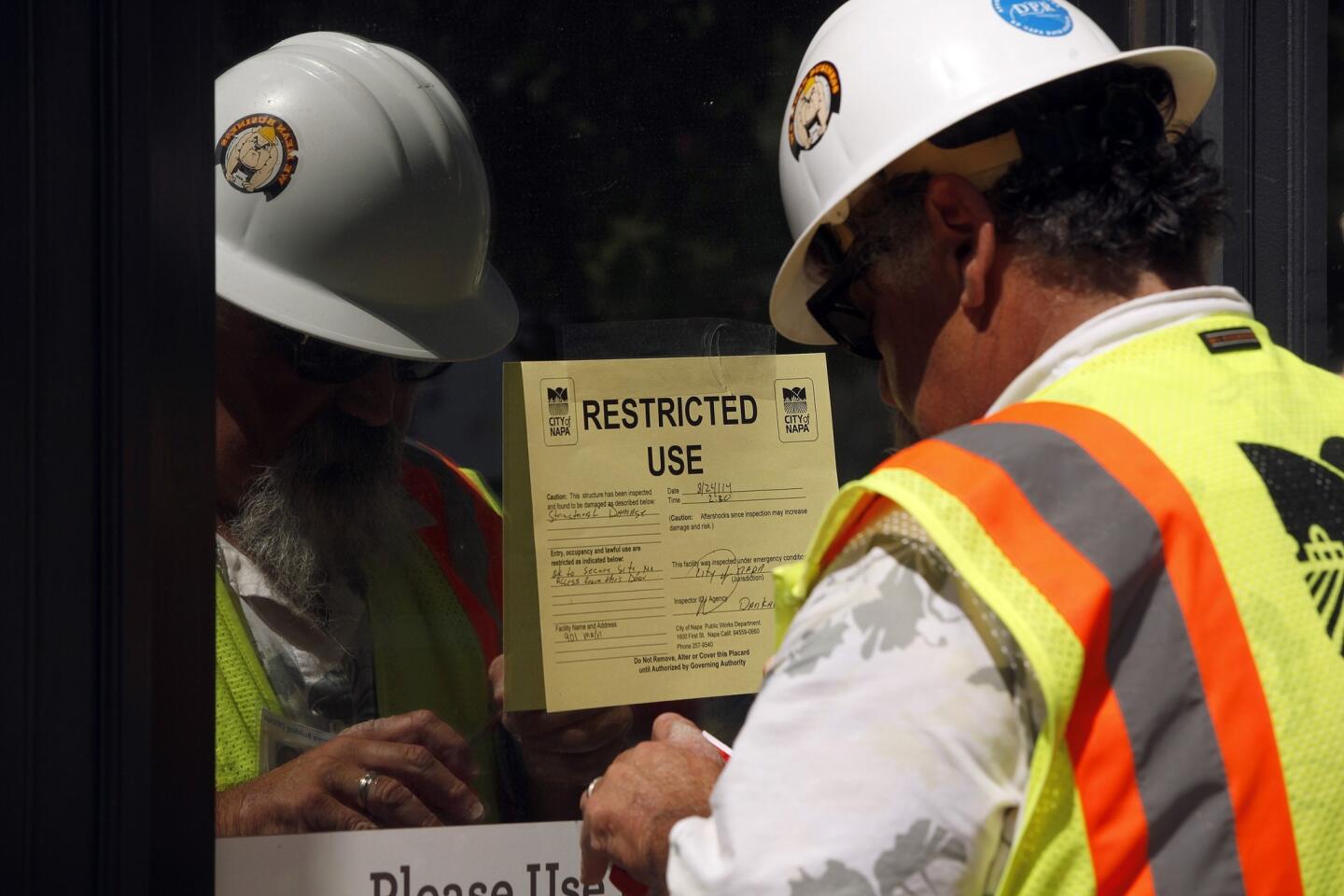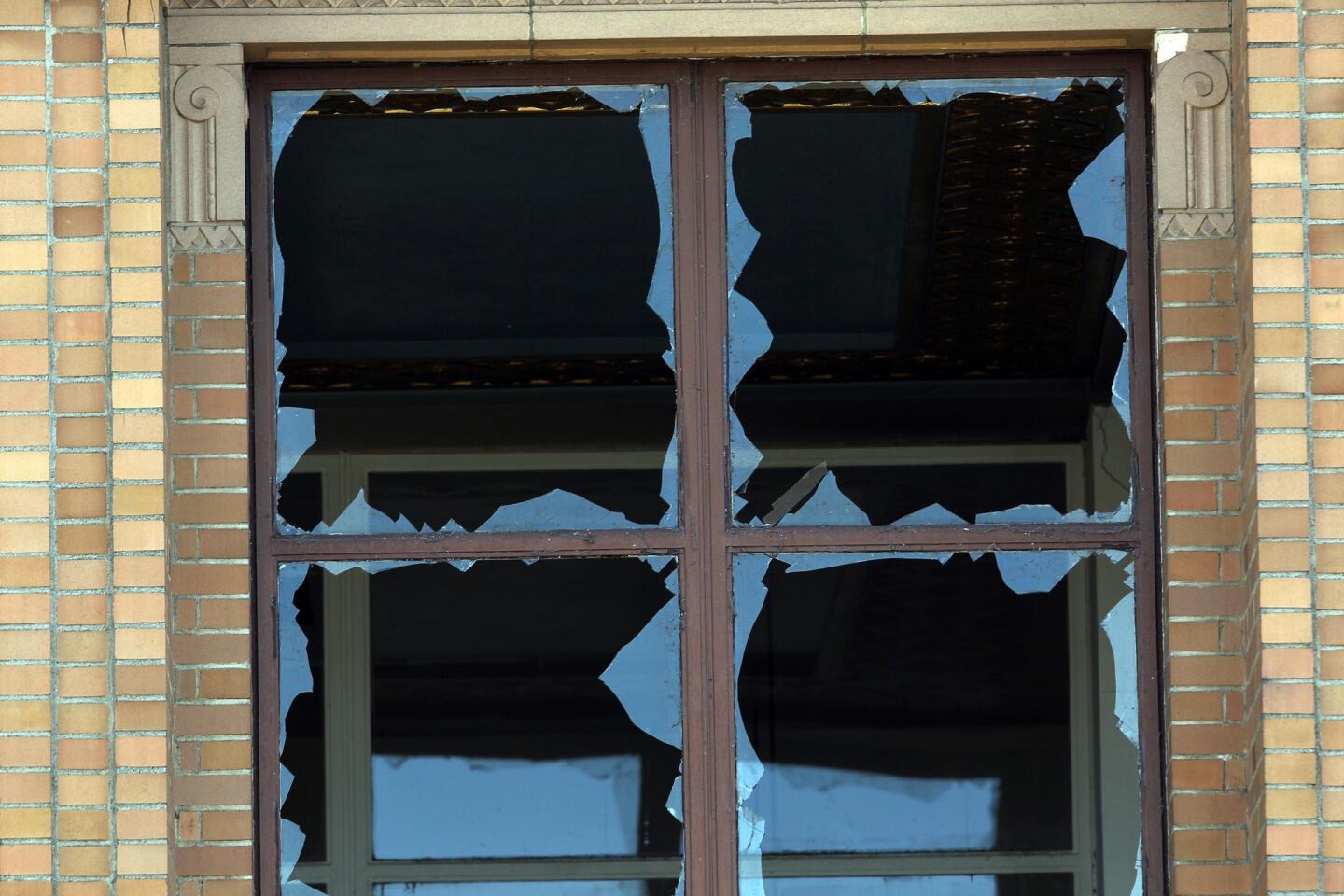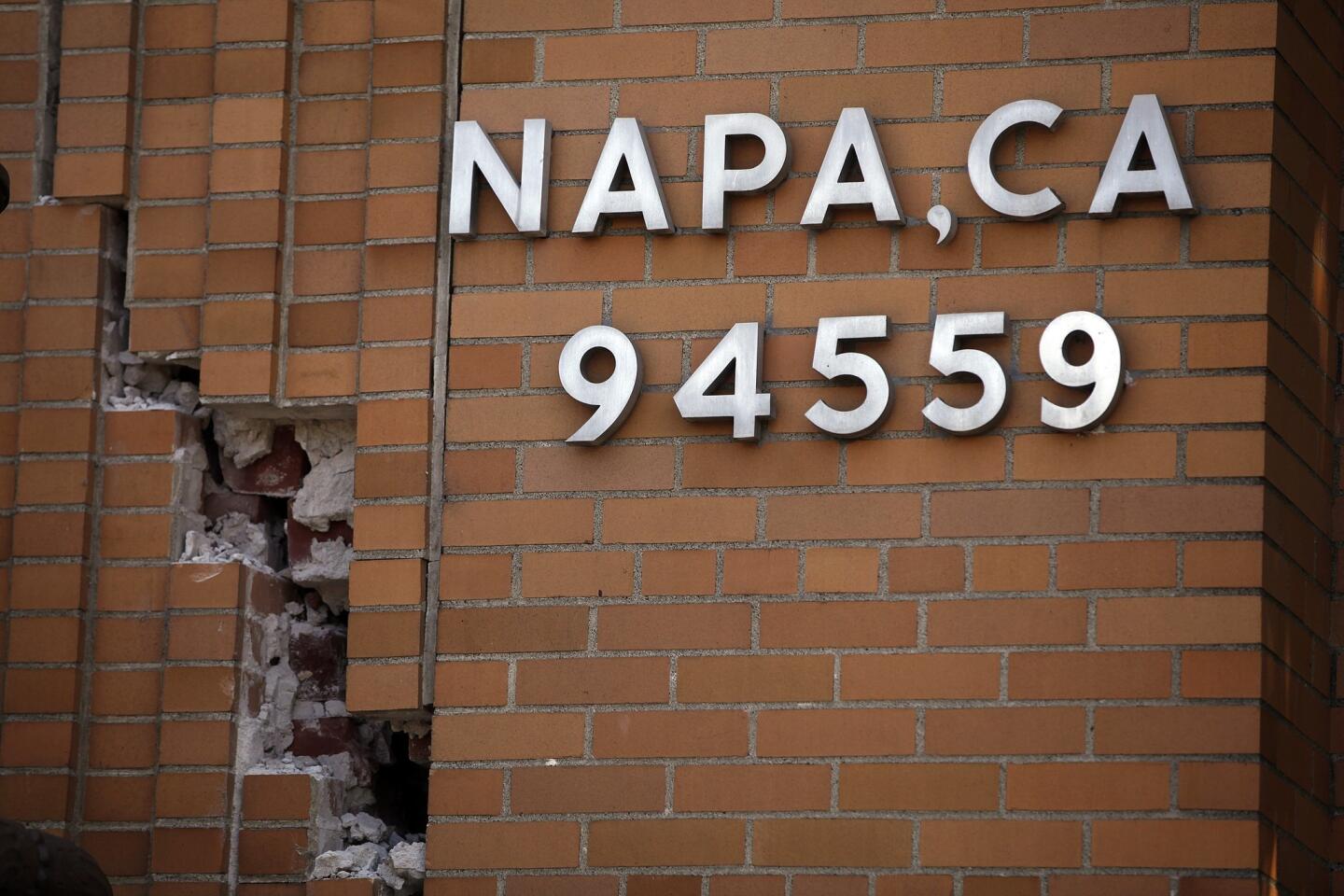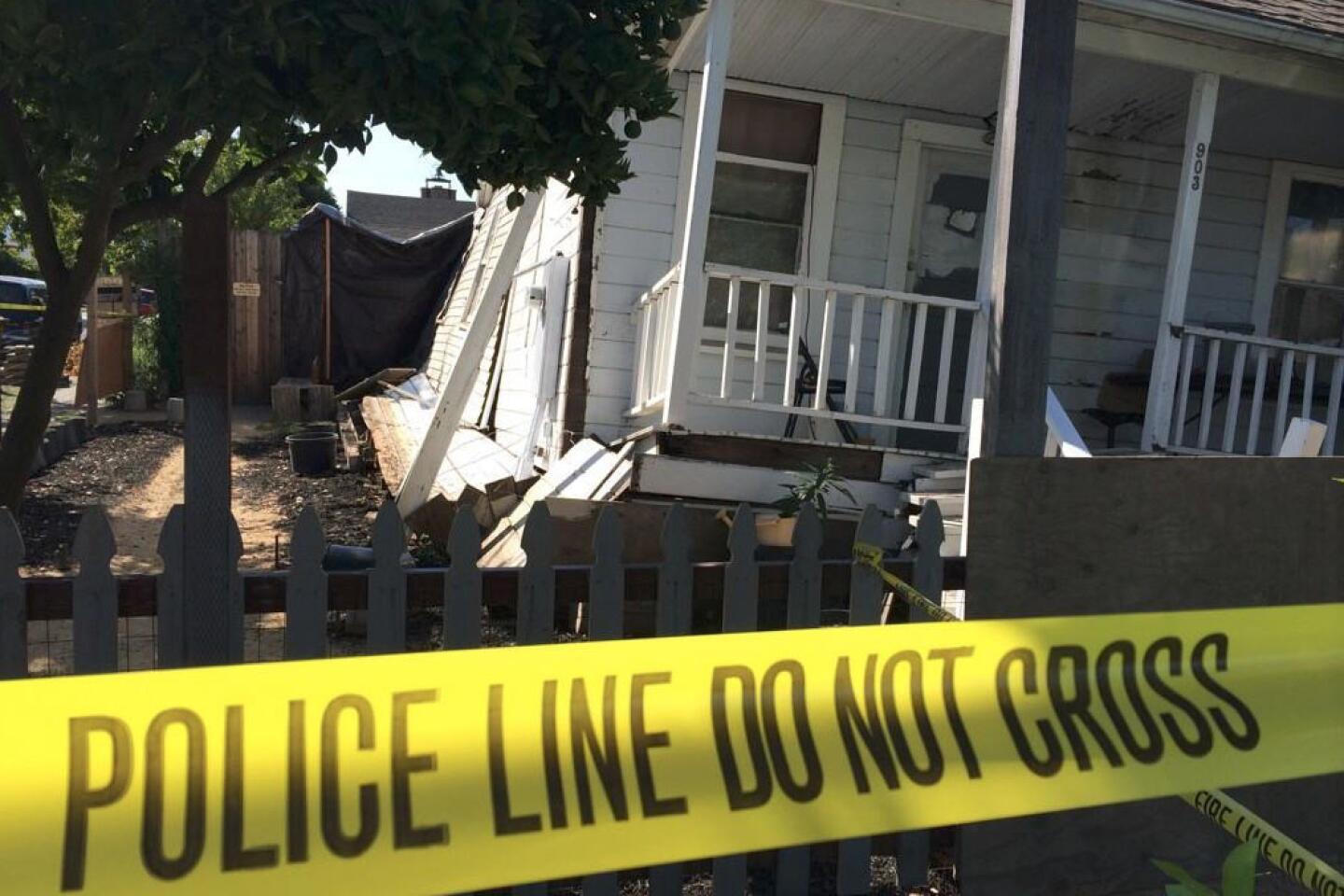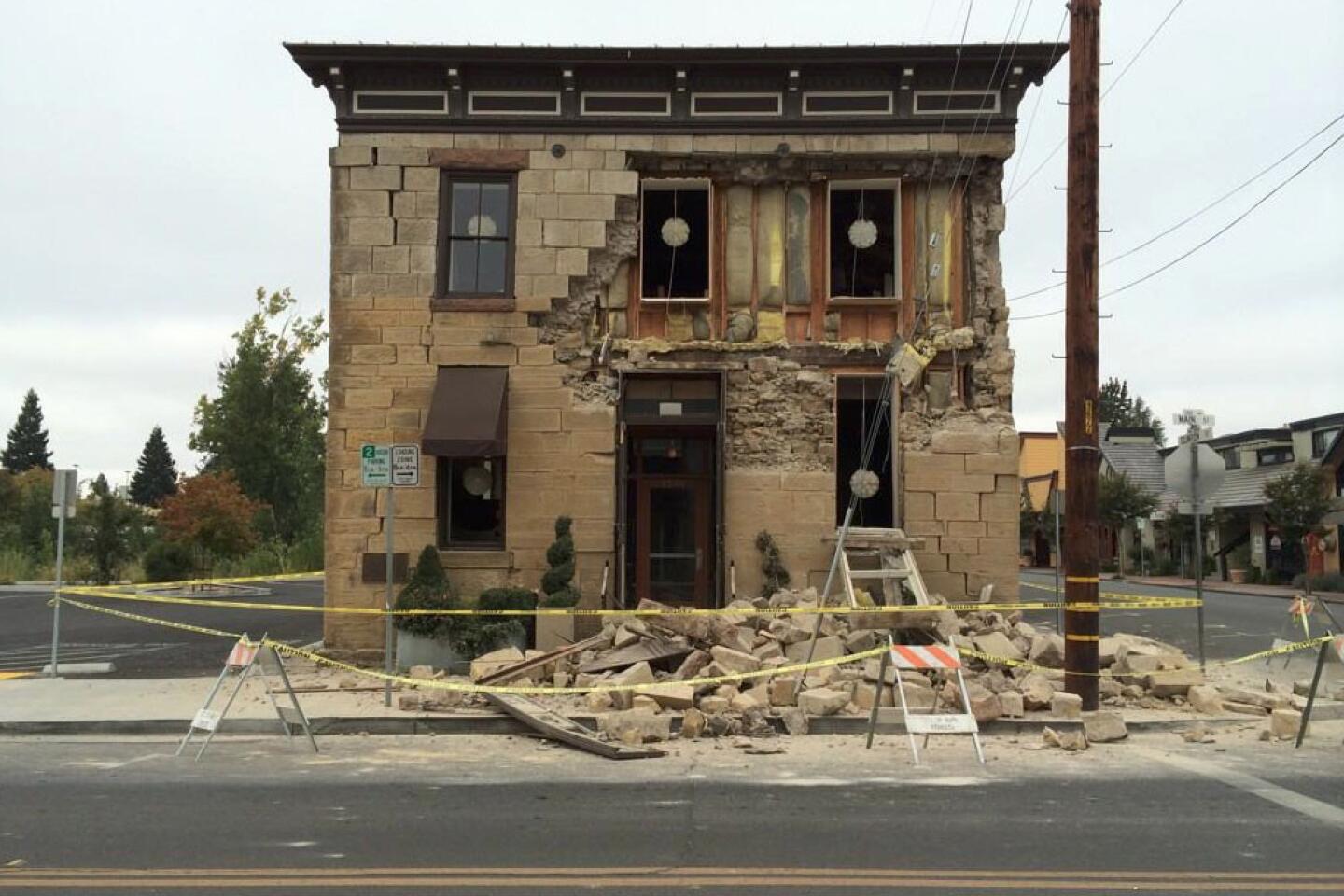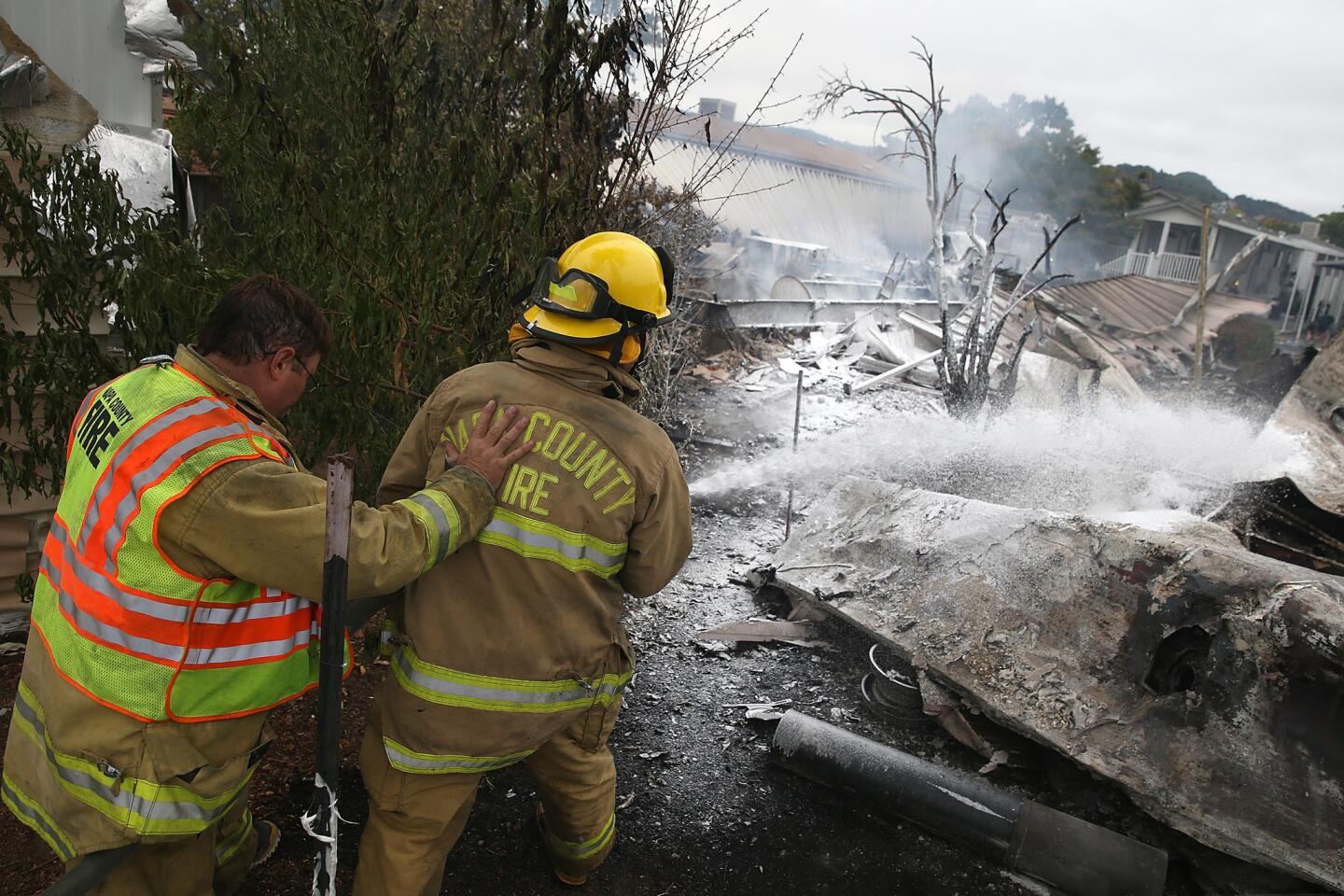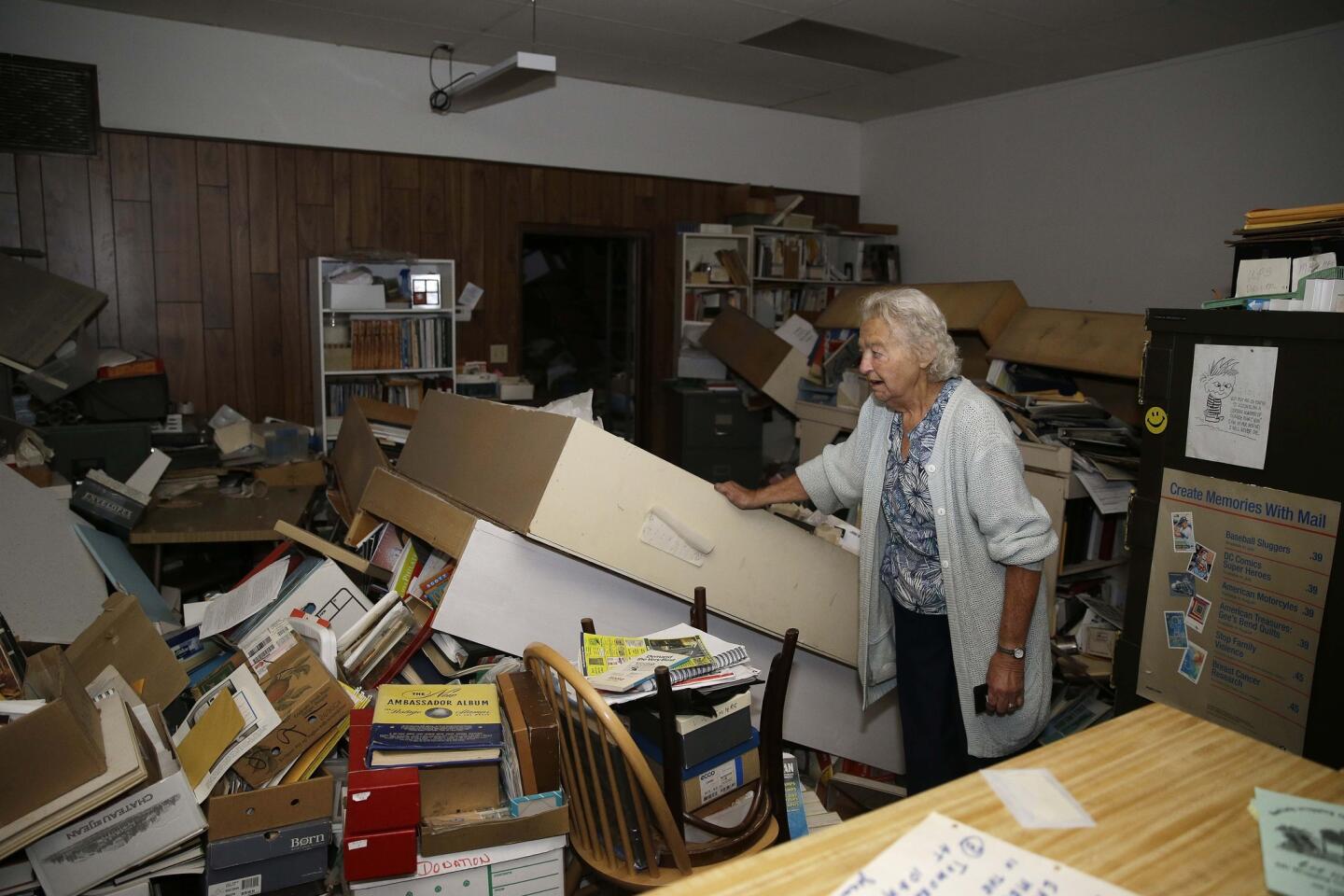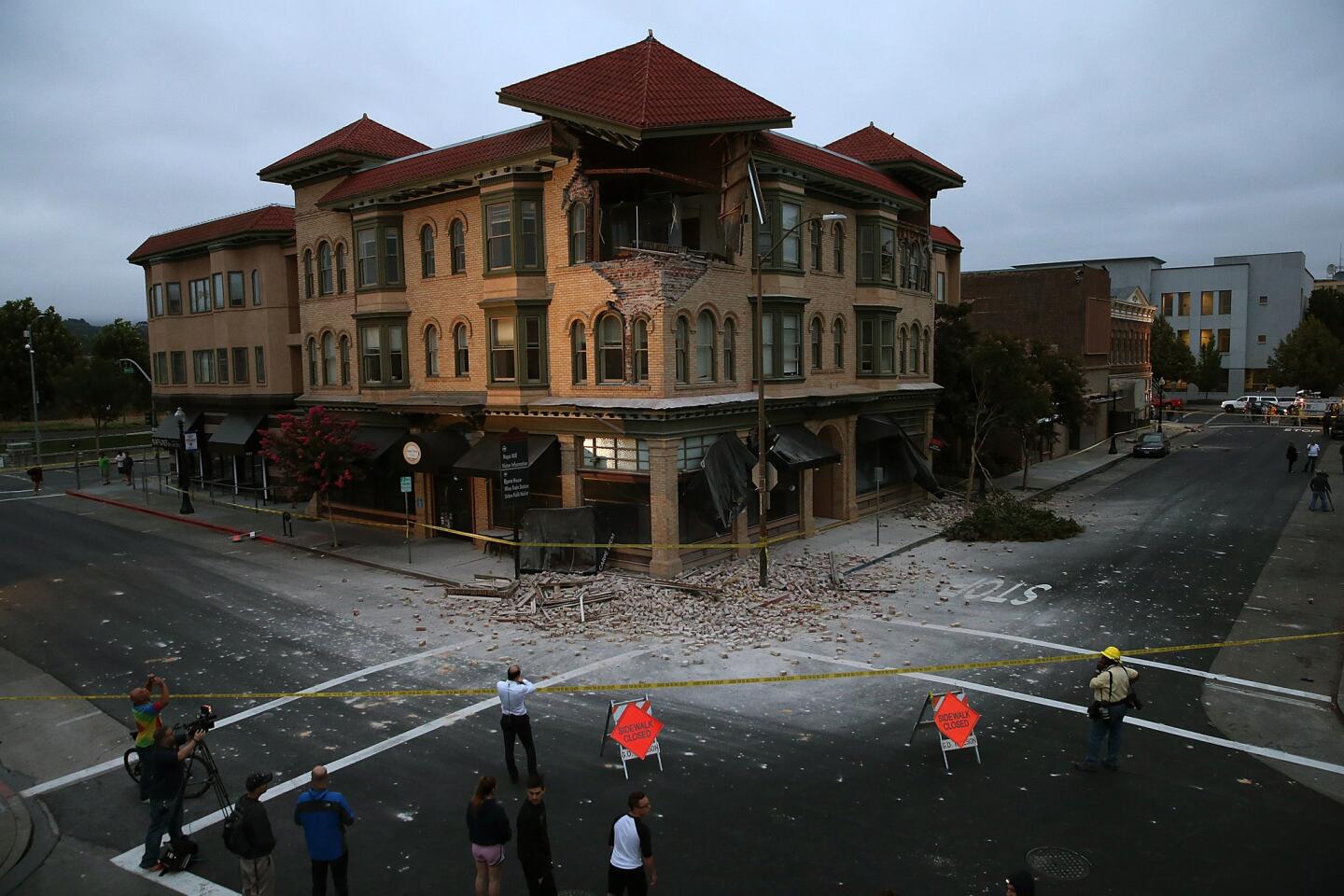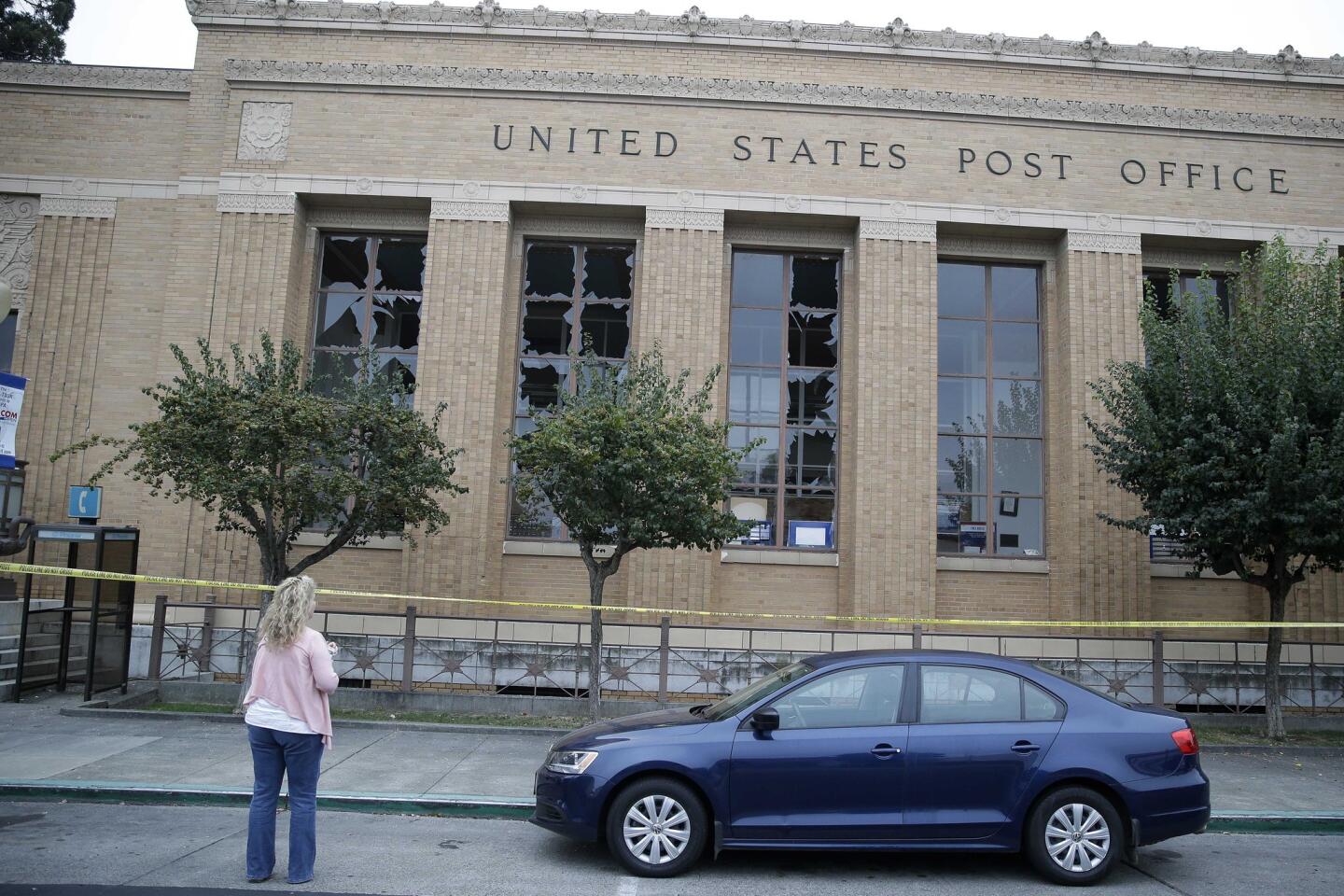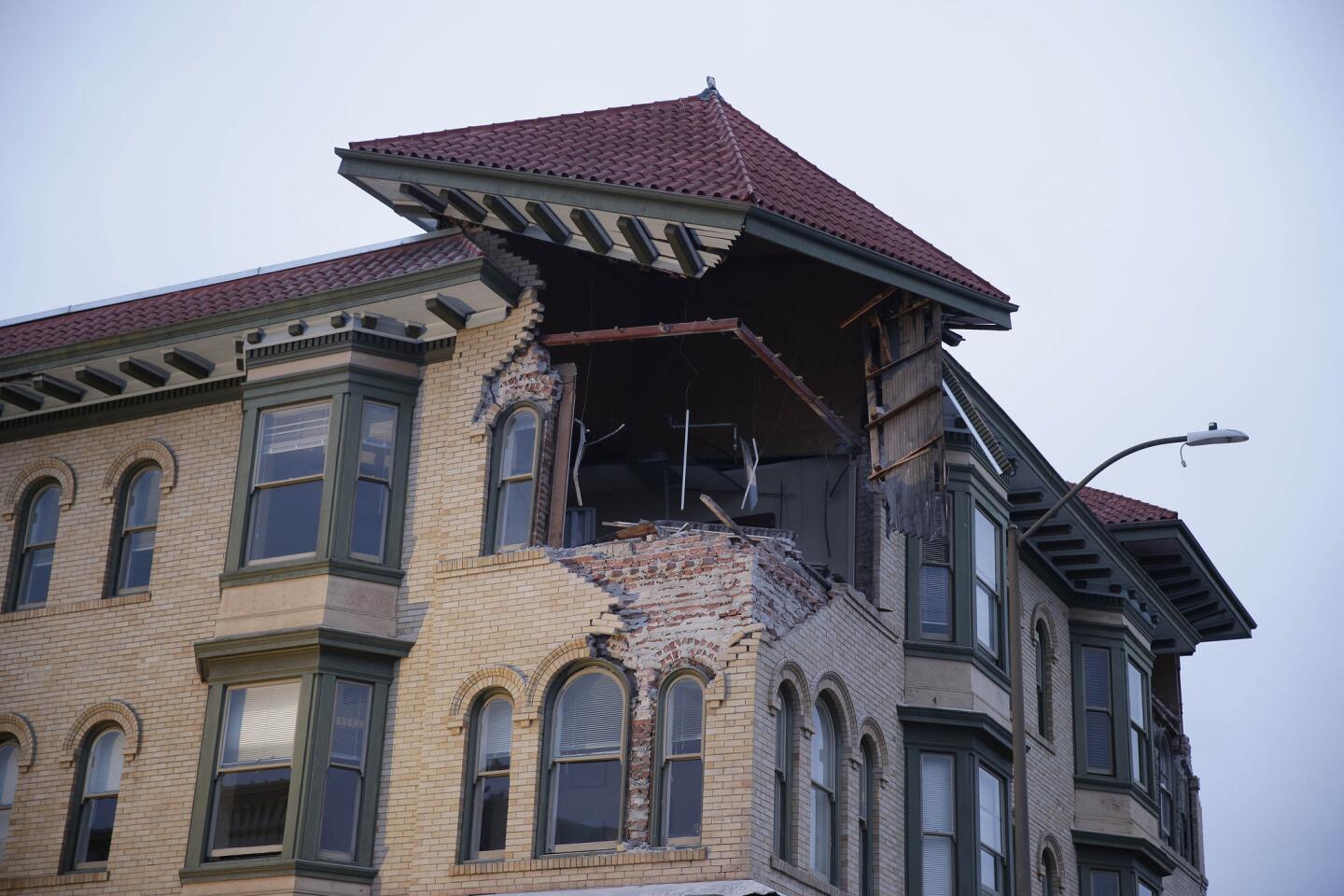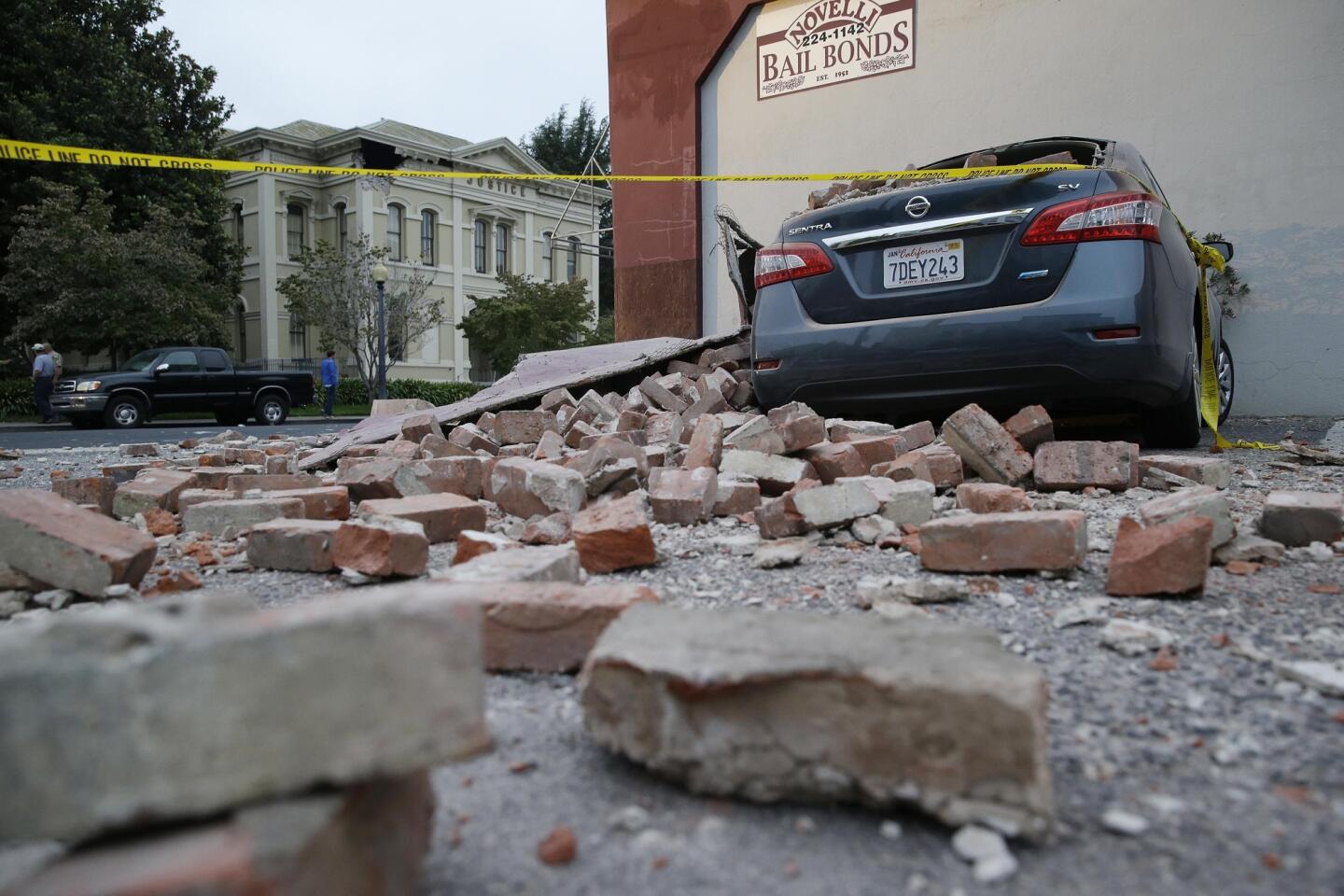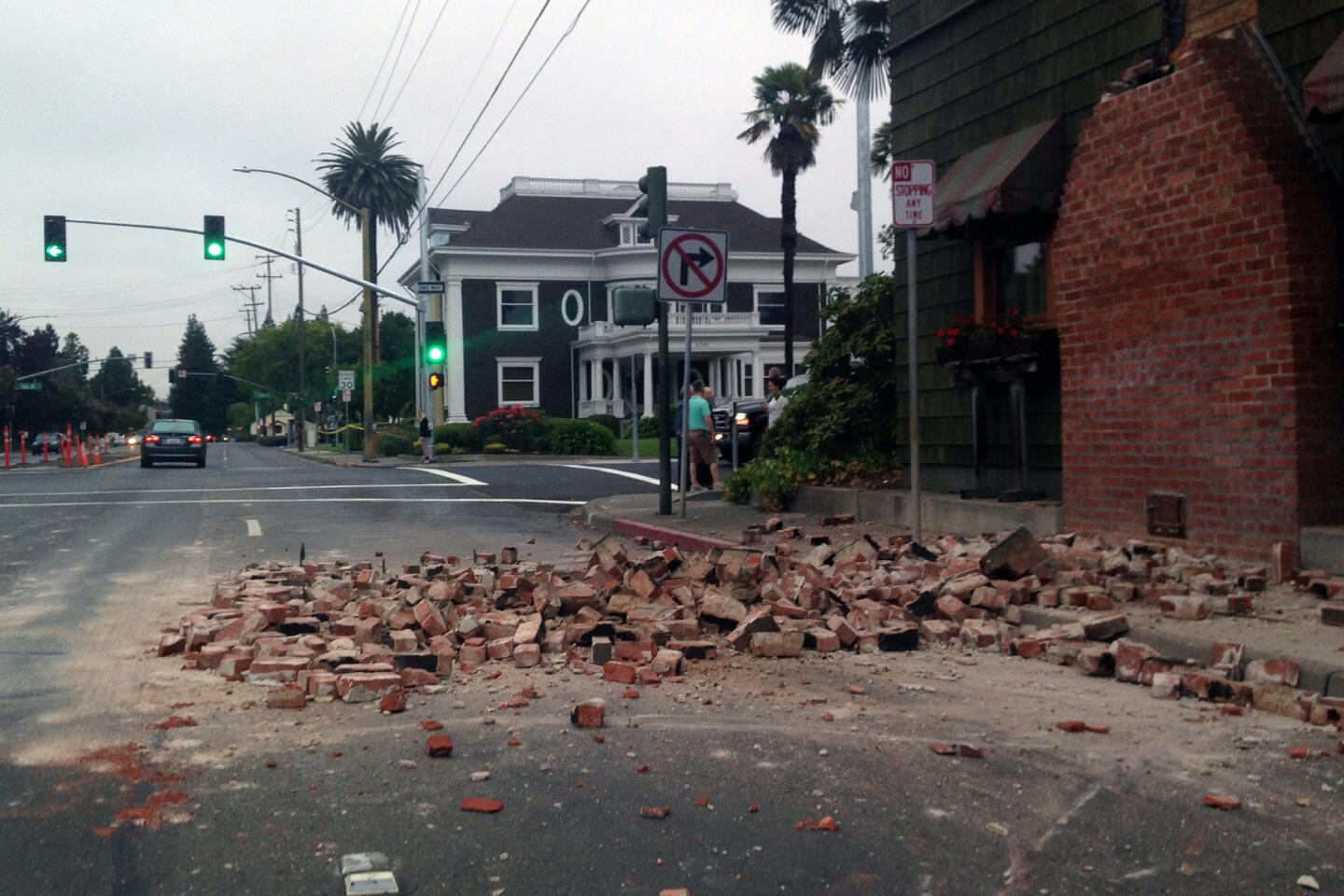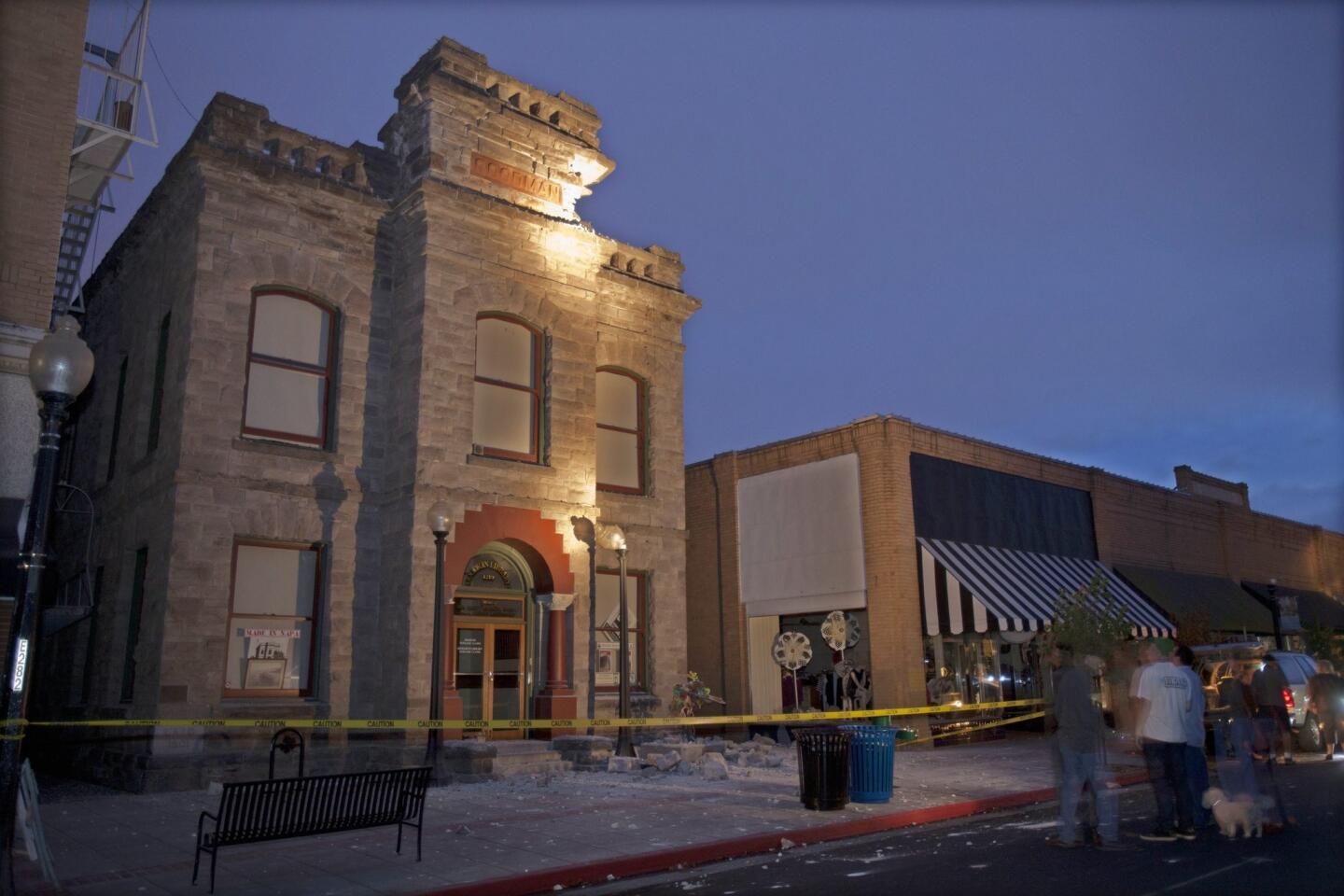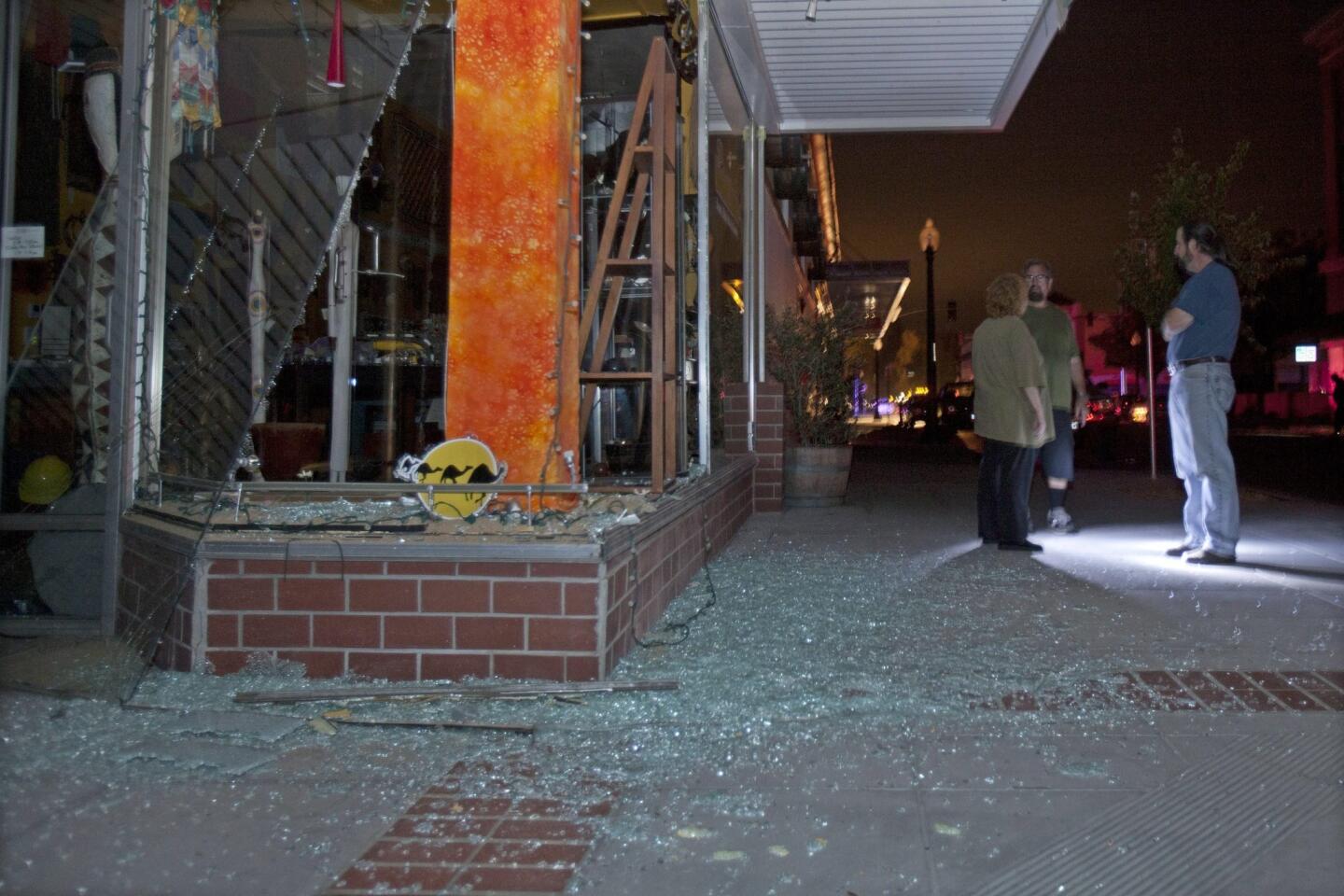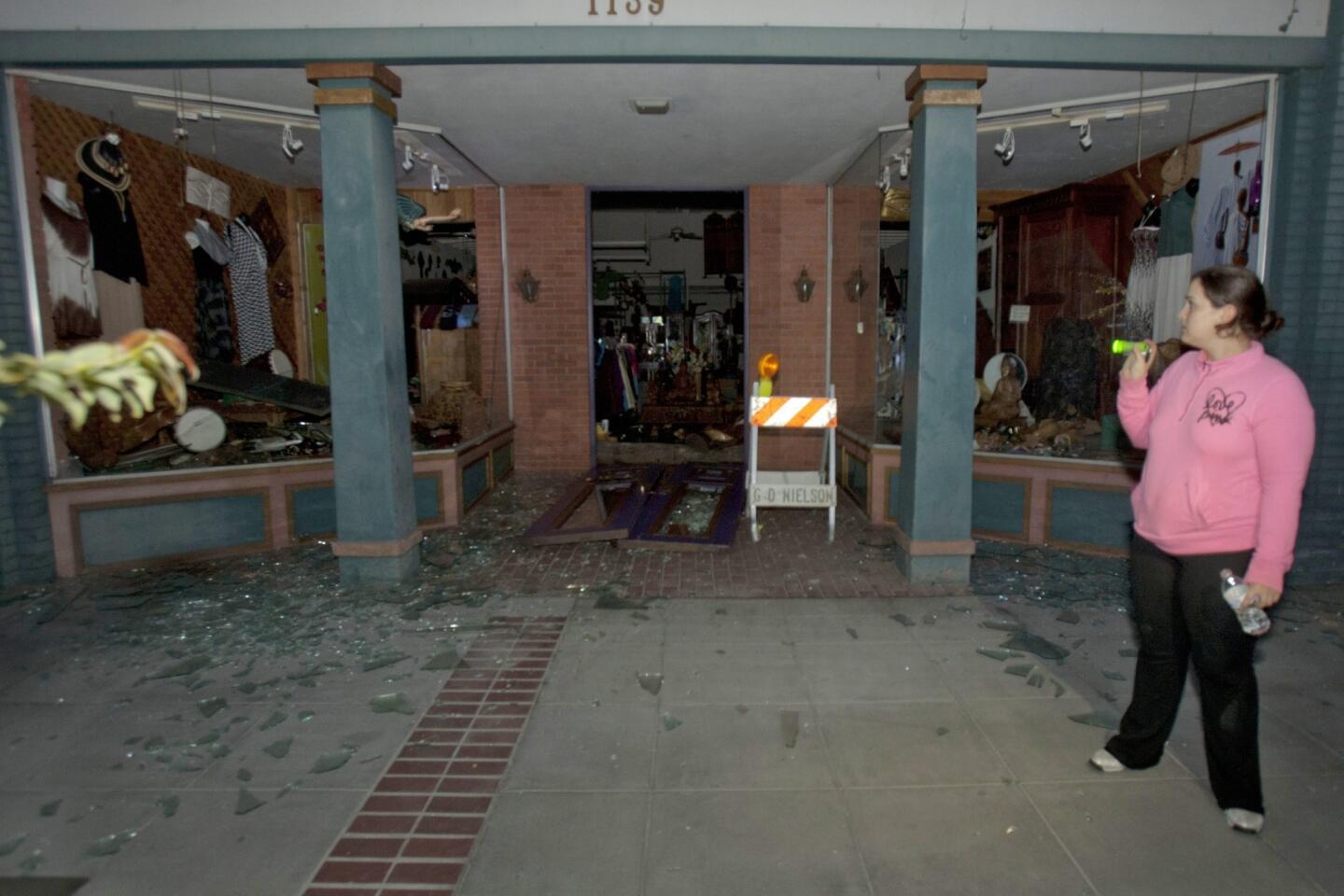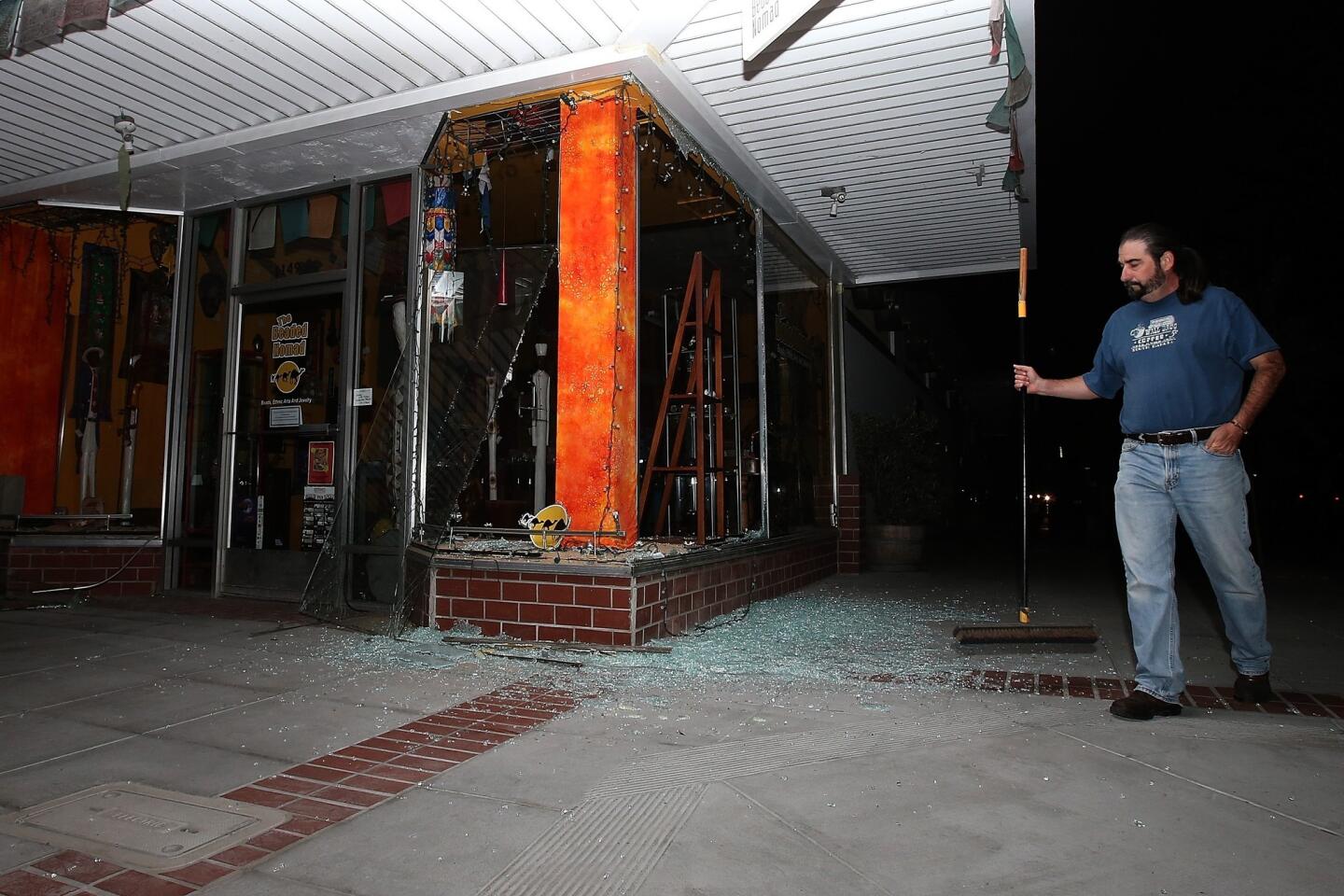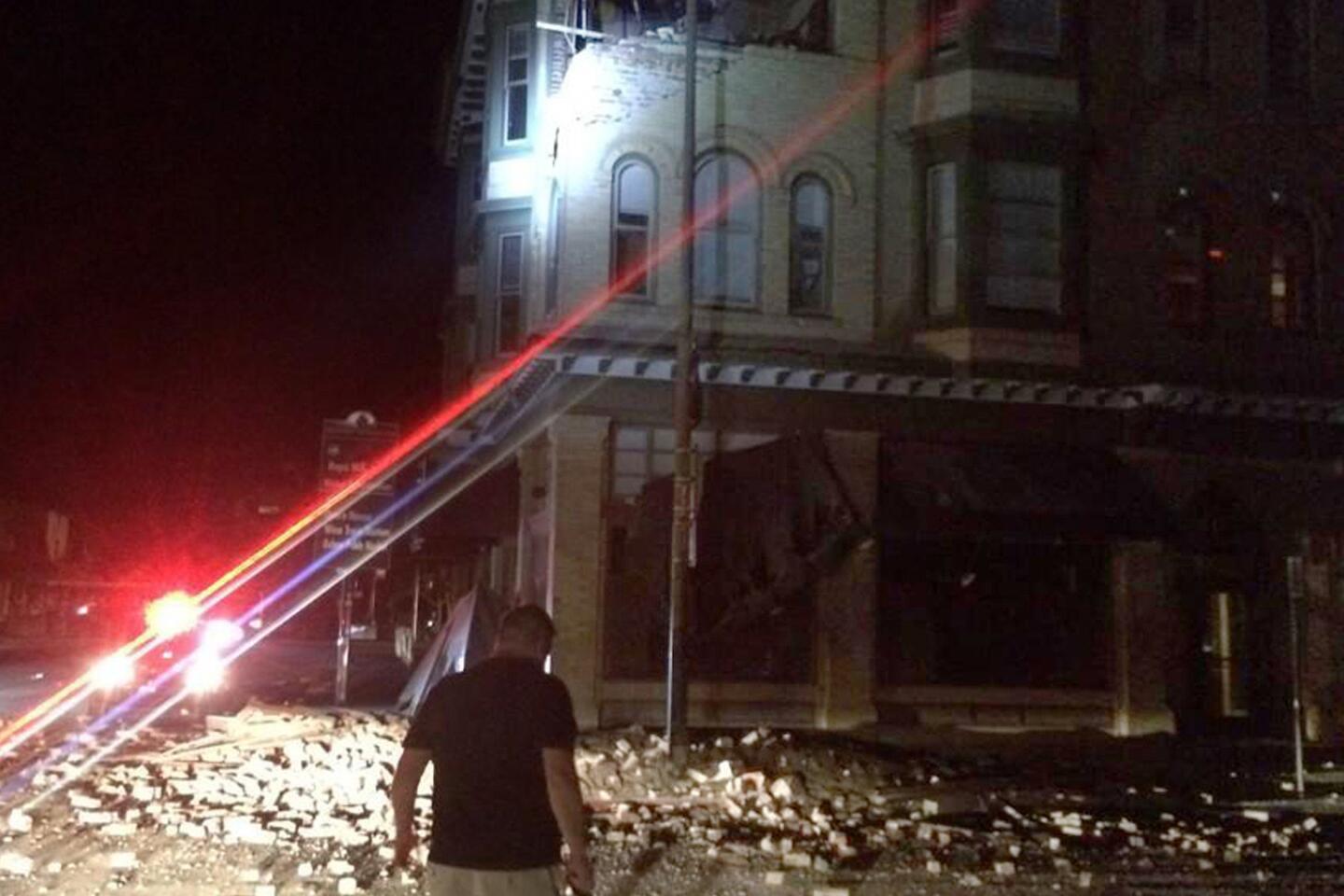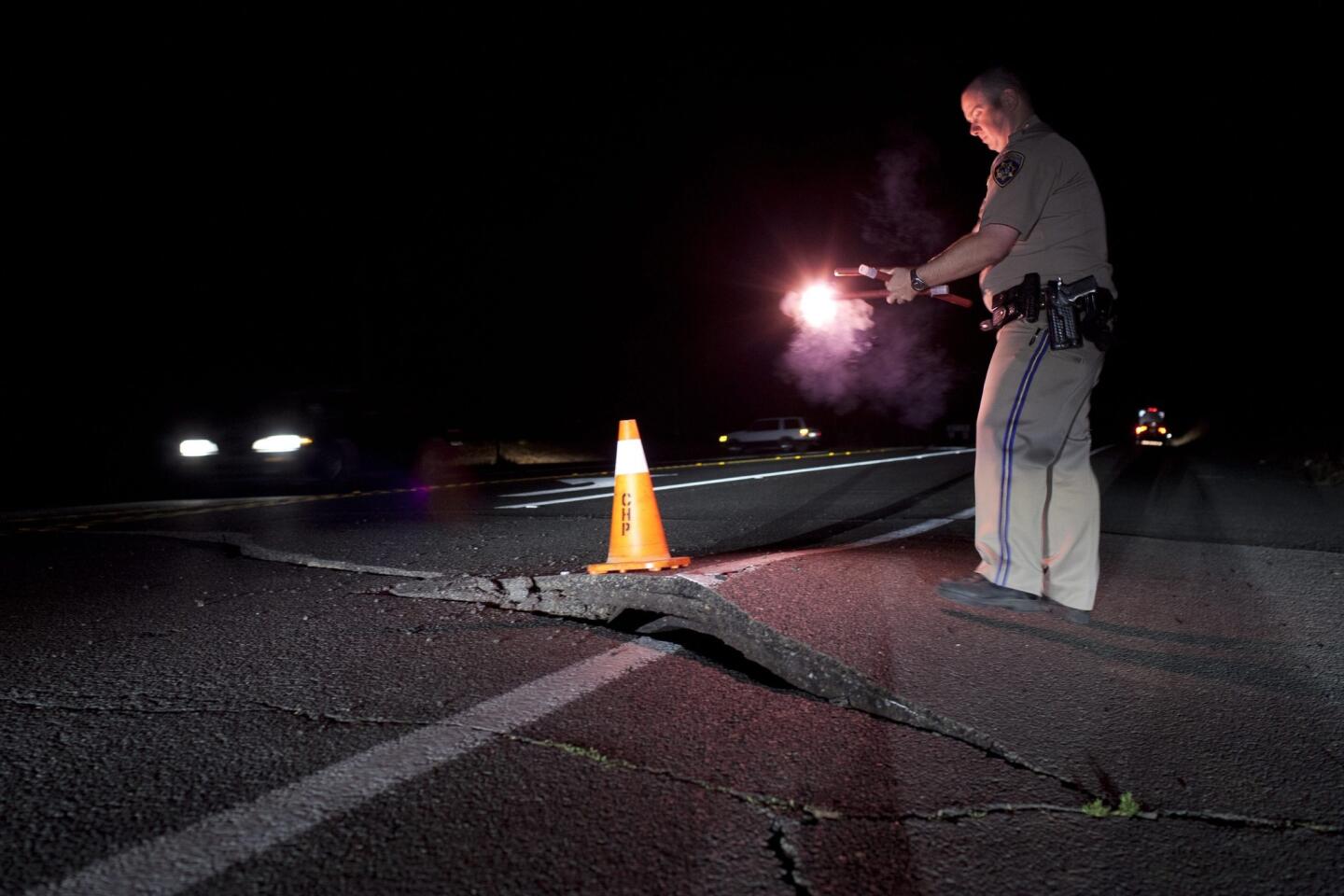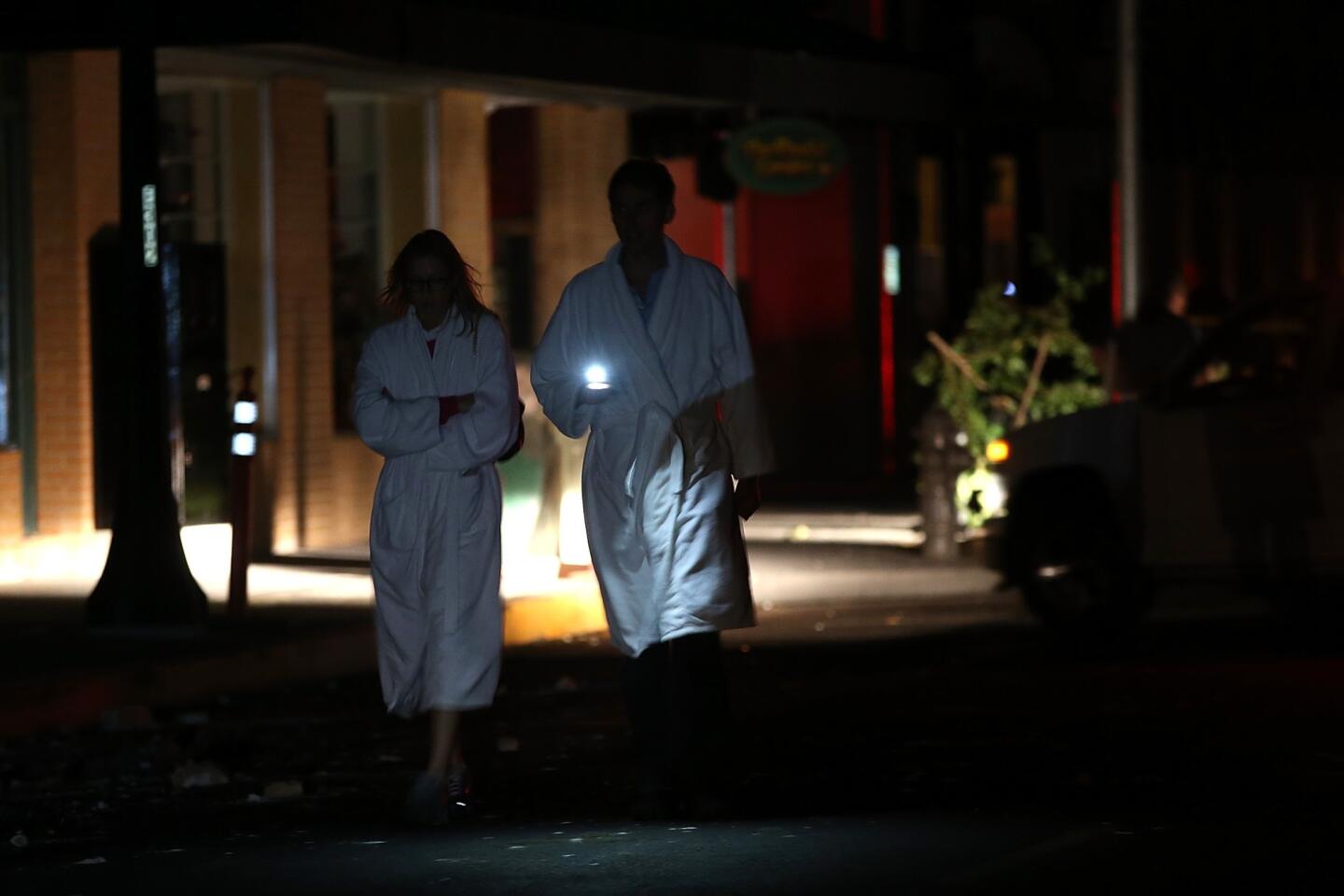Napa, Calif., quake: Early-warning system gains support
- Share via
The success of an early warning system during Sunday’s 6.0 magnitude Napa earthquake is generating more support for the fledgling network.
Scientists at UC Berkeley released a video showing the system sending an alert to their computers when the quake struck. Officials said the system provided an alert 10 seconds before the quake was felt at Berkeley.
Though Napa would not have gotten a warning because of its proximity to the epicenter of the earthquake, Richard Allen, director of UC Berkeley’s Seismological Laboratory, said the alert showed the promise of the technology.
The system works because while earthquakes travel at the speed of sound, sensors that initially detect the shaking near the epicenter of a quake can send a message faster -- at the speed of light -- to warn residents farther away that the quake is coming.
In July, a congressional committee recommended the first federal funds -- $5 million -- specifically for the project.
Sen. Dianne Feinstein (D-Calif.) said Monday that the success shows the urgent need to have the system available to the public.
“I believe an integrated earthquake early warning system is essential to save lives and property,” she said in a statement. “Two bills from the Senate Appropriations Committee move us toward that goal. The bill to fund the Department of the Interior includes $5 million to begin work on an early warning system, while the bill to fund the Department of Homeland Security urges FEMA to prioritize grant funds for such a system. These bills will advance this fall and I will continue to prioritize funding for this system.”
California is working to complete a statewide system, which could be unveiled in the next few years.
Once fully developed, the system could give downtown Los Angeles 40 to 50 seconds of warning that the “Big One” was headed from the San Andreas fault, giving time for elevators to stop at the next floor and open up, firefighters to open up garage doors, high-speed trains to slow down to avoid derailment and surgeons to take the scalpel out of a patient.
A lack of funds, however, has slowed the system’s progress. State legislators have suggested a public/private parternship and do not want the system fully funded by state funds.
More to Read
Sign up for Essential California
The most important California stories and recommendations in your inbox every morning.
You may occasionally receive promotional content from the Los Angeles Times.
